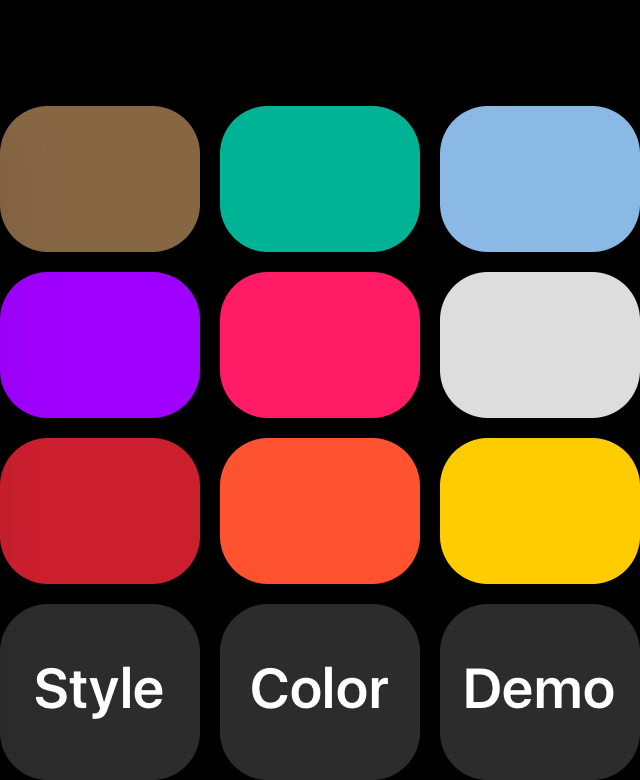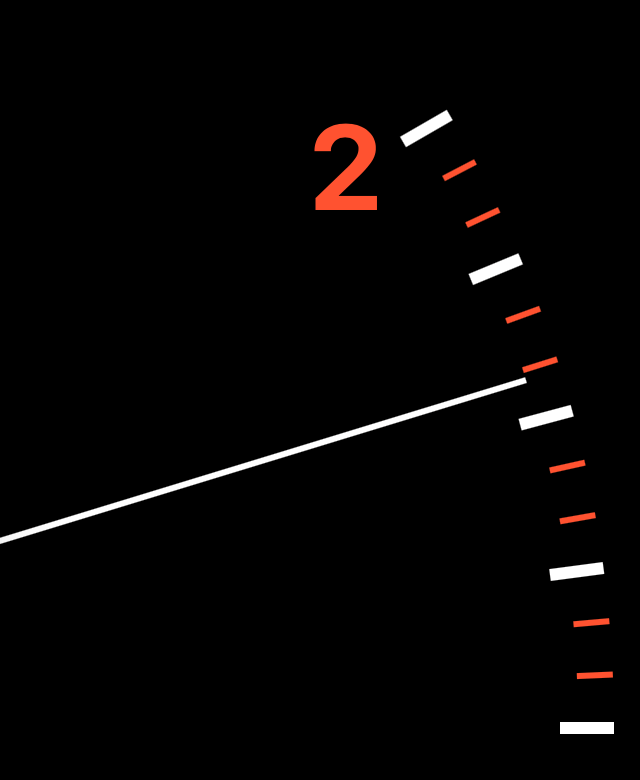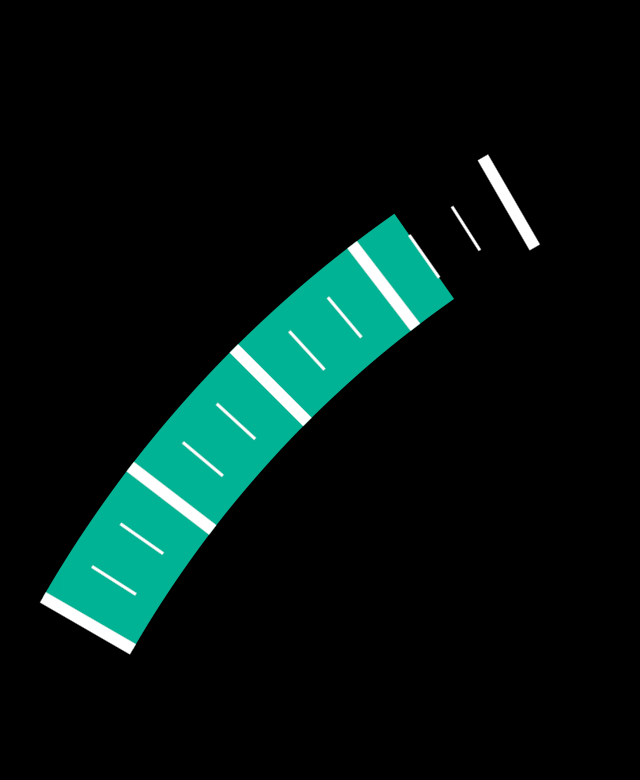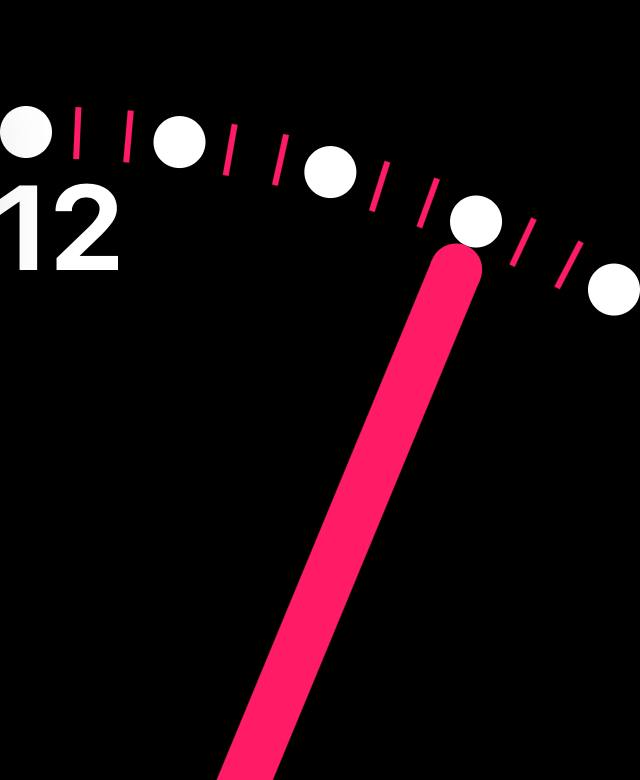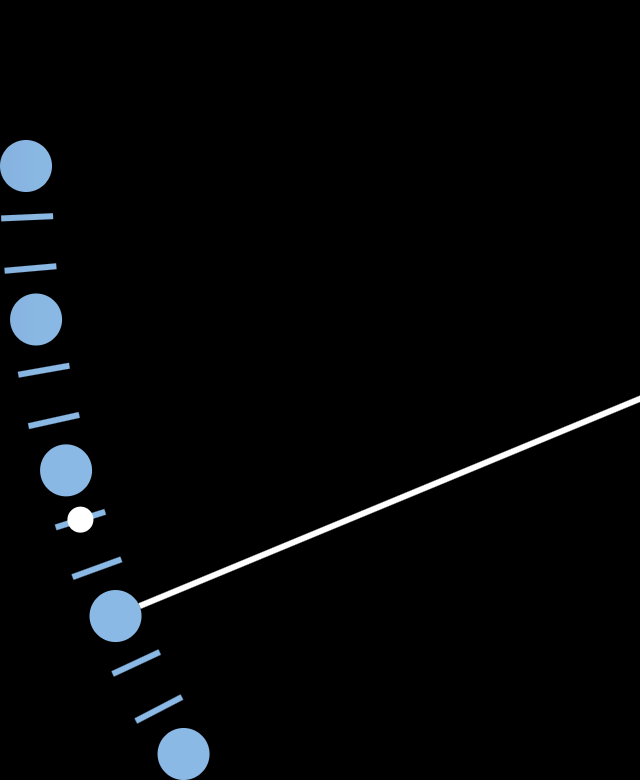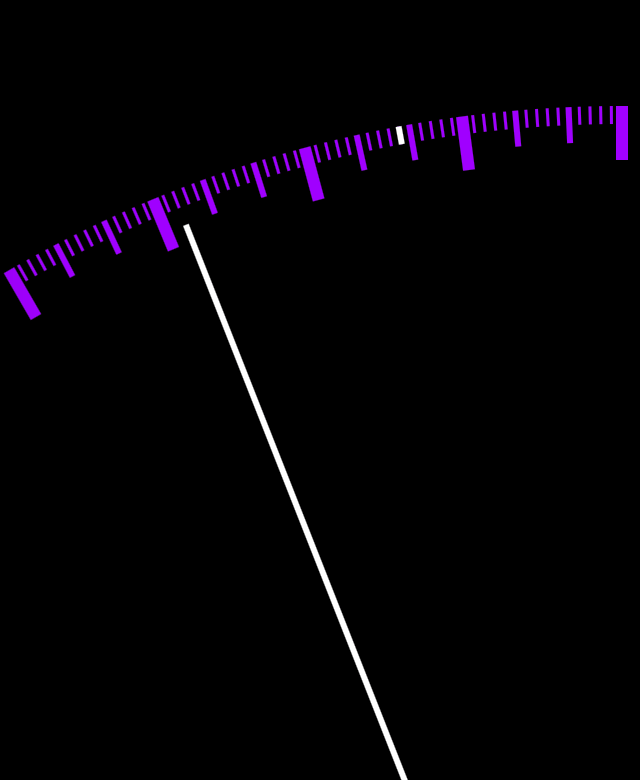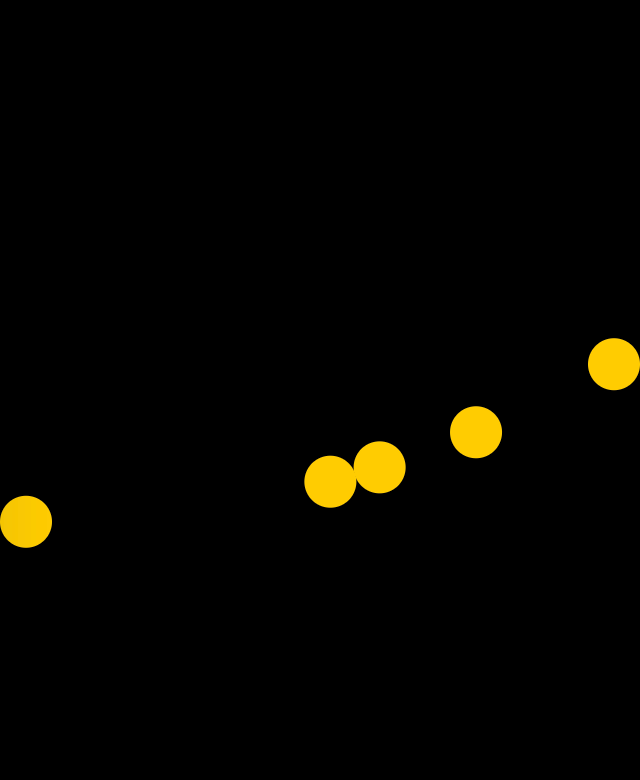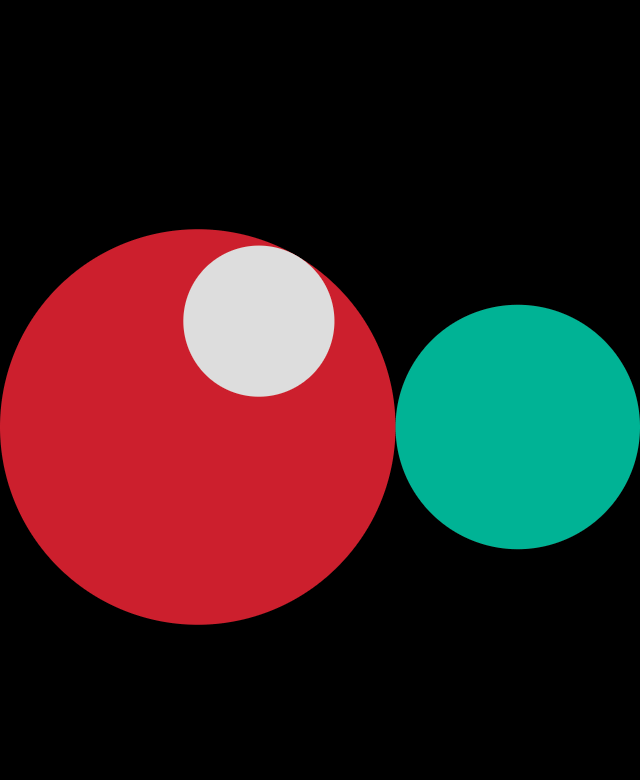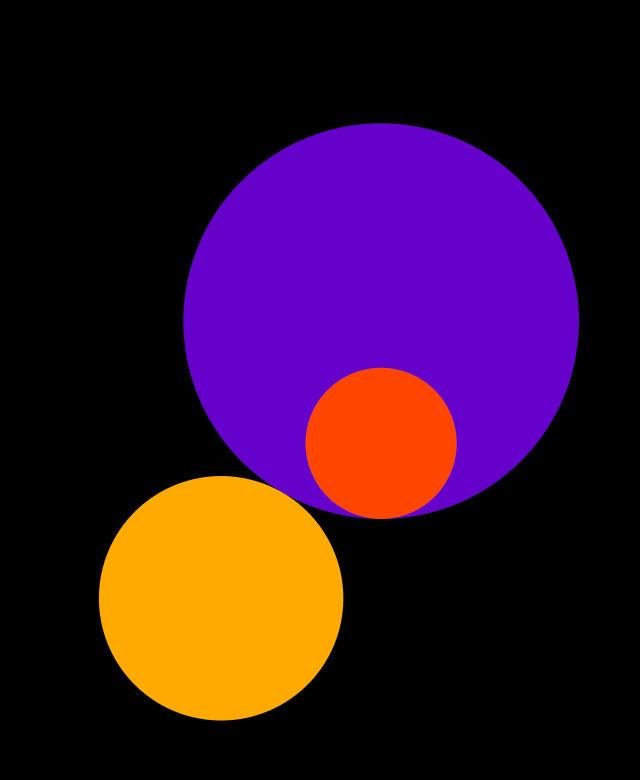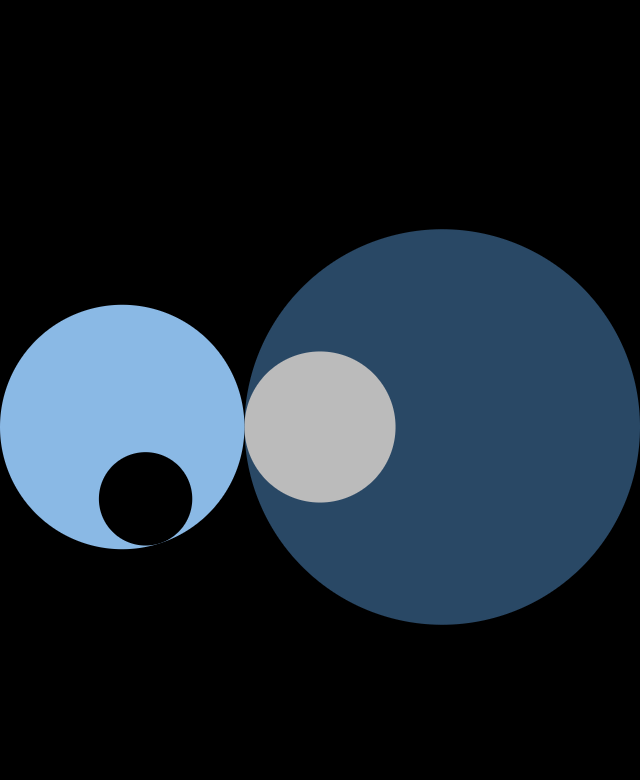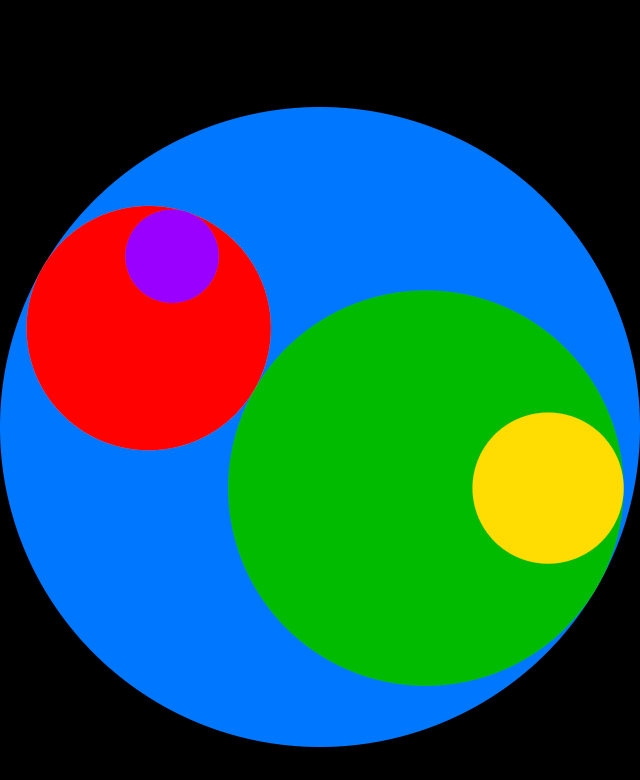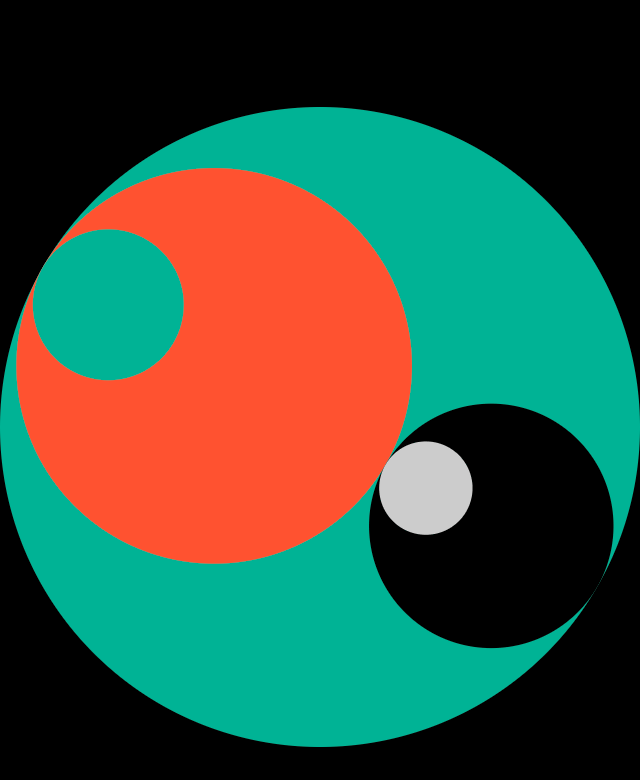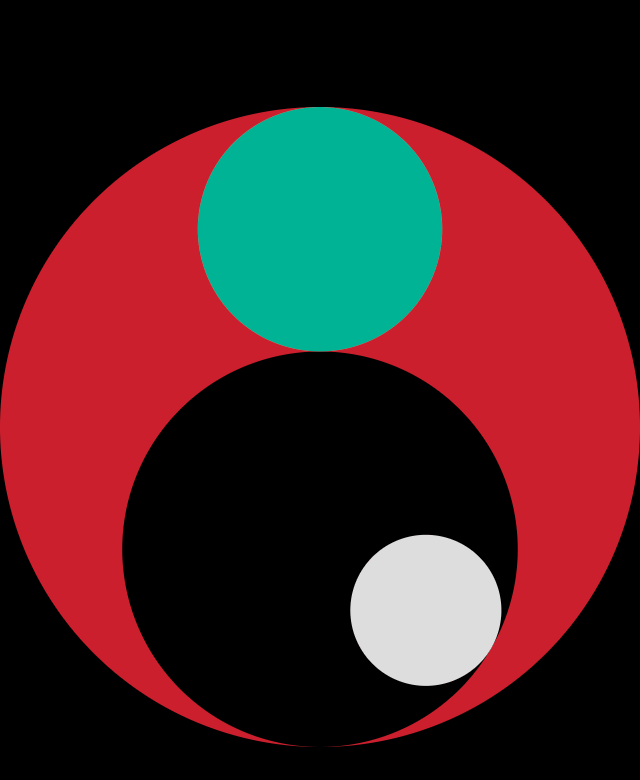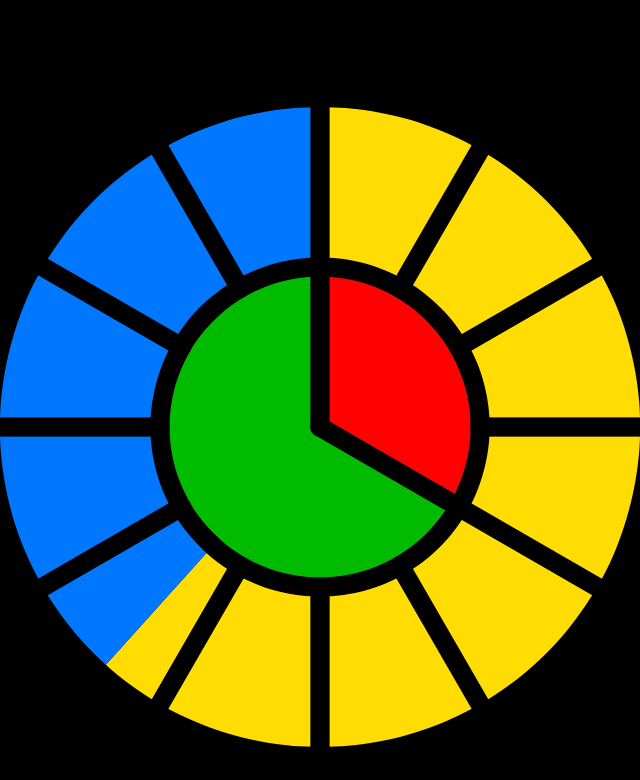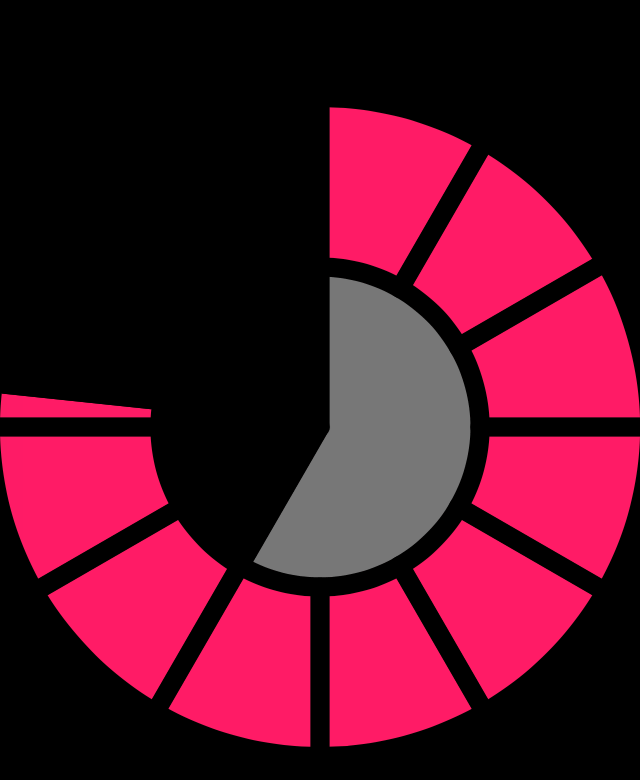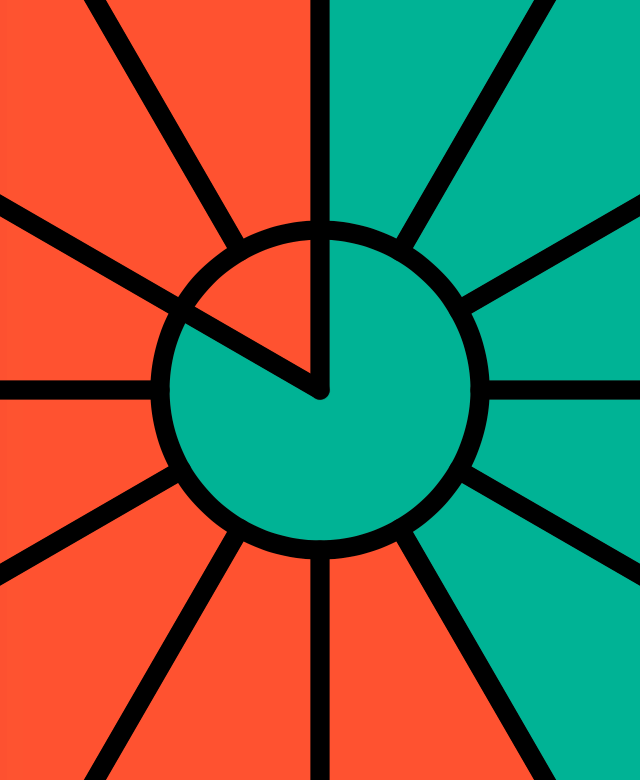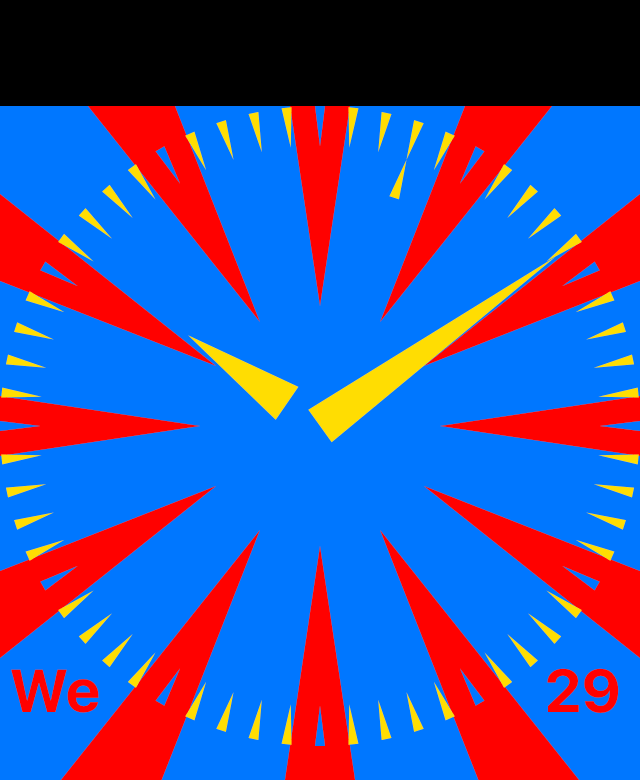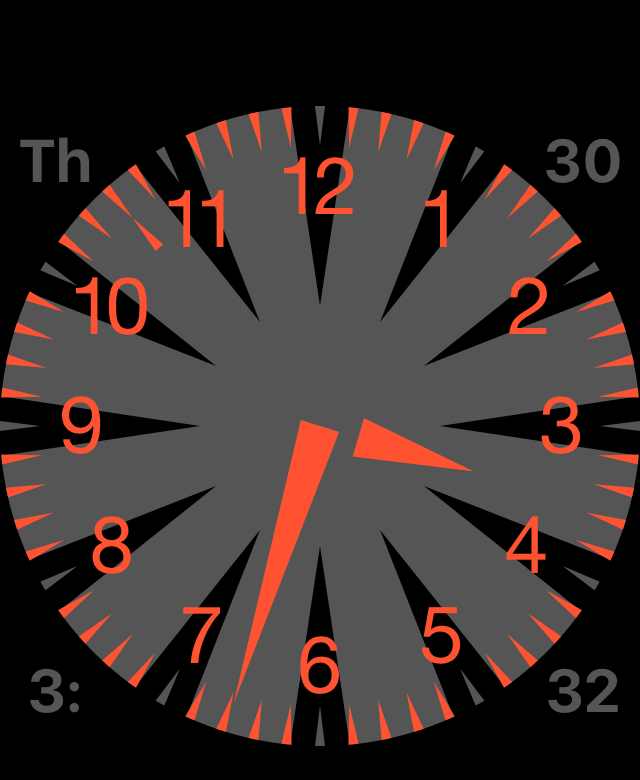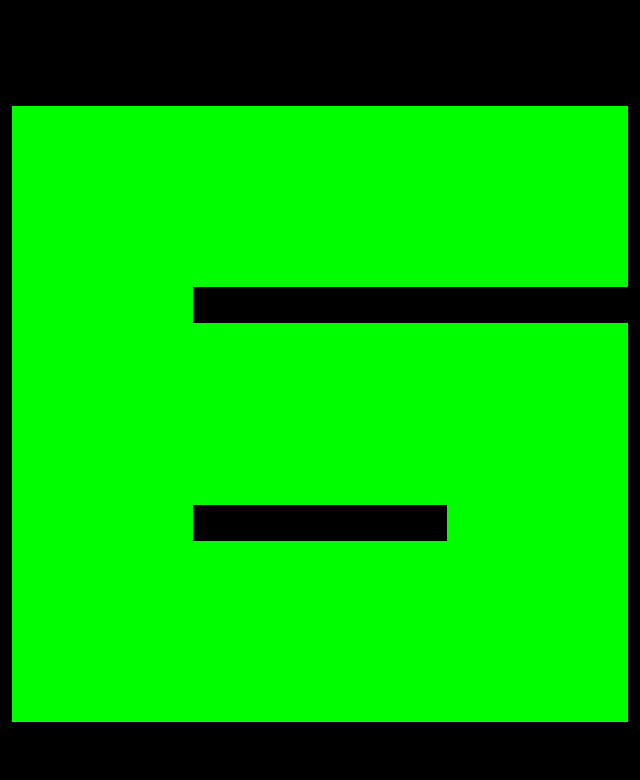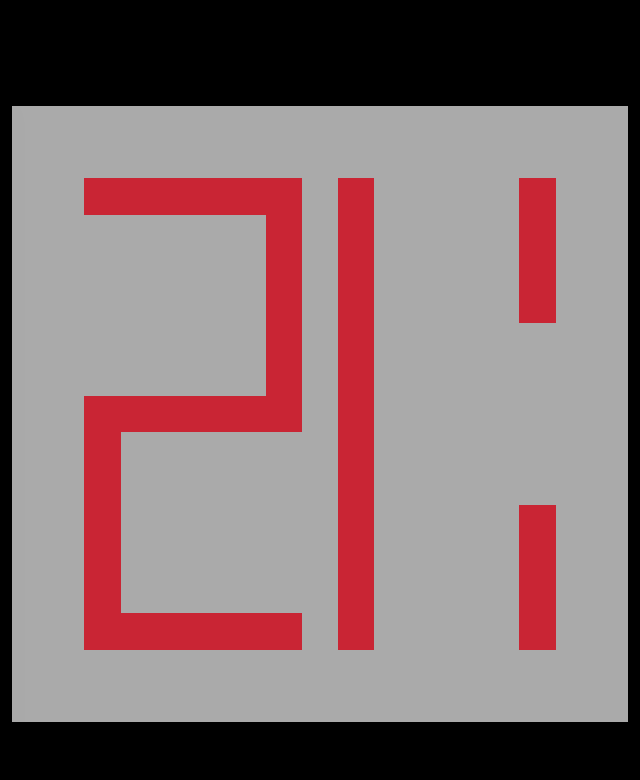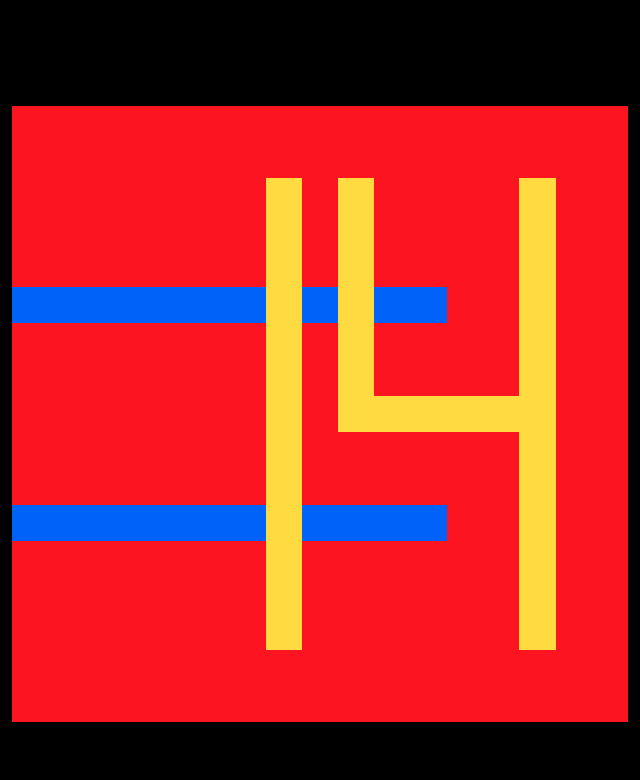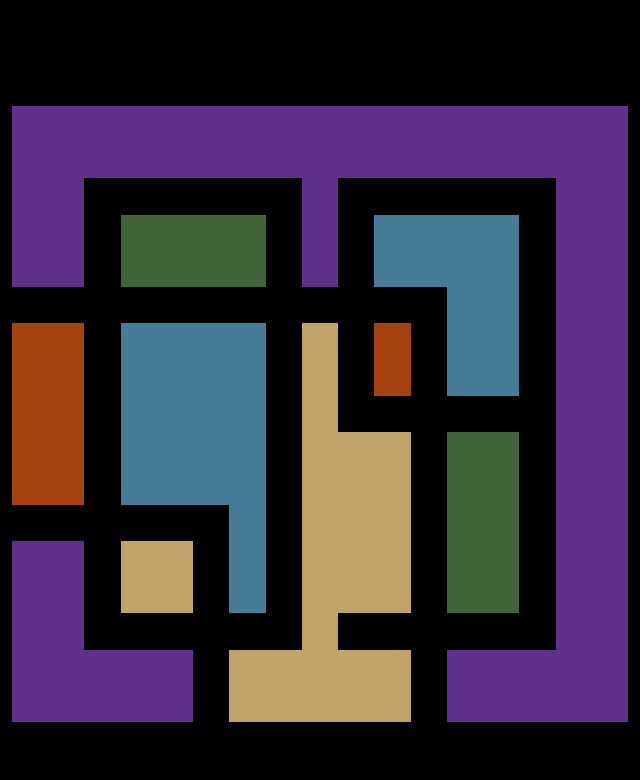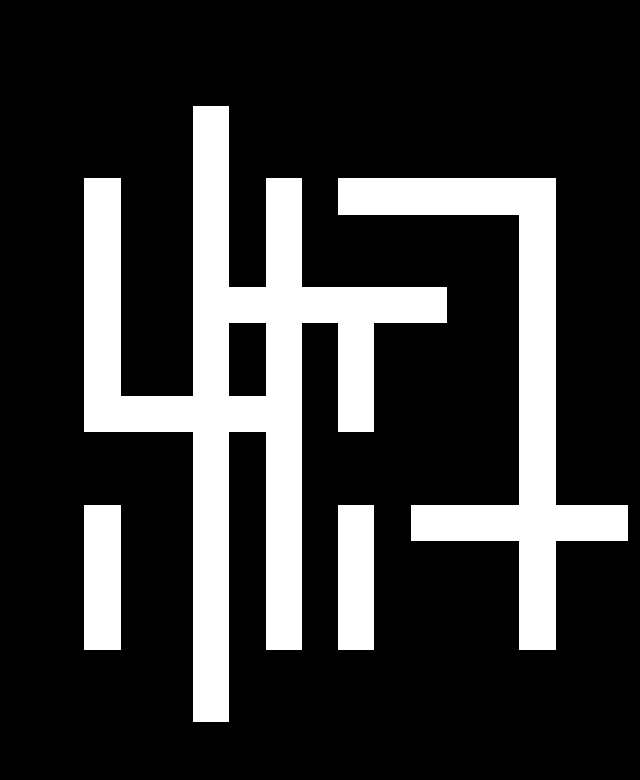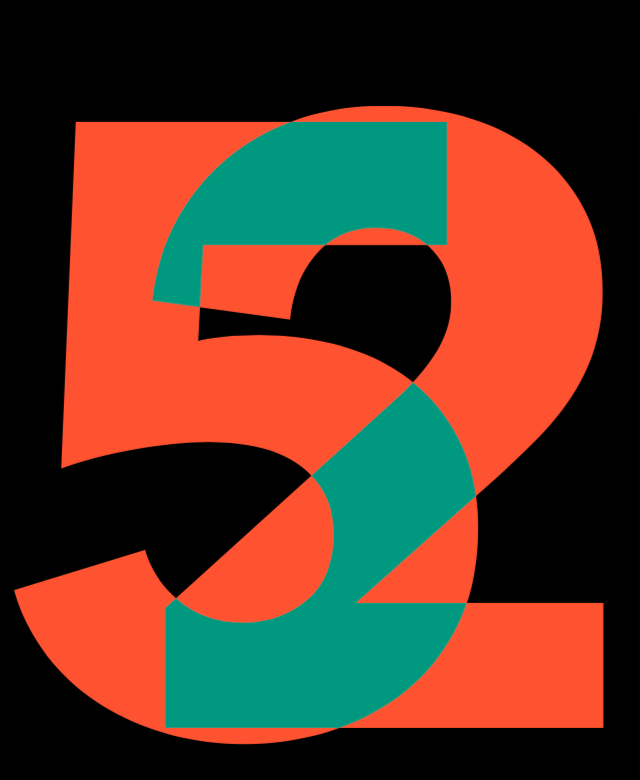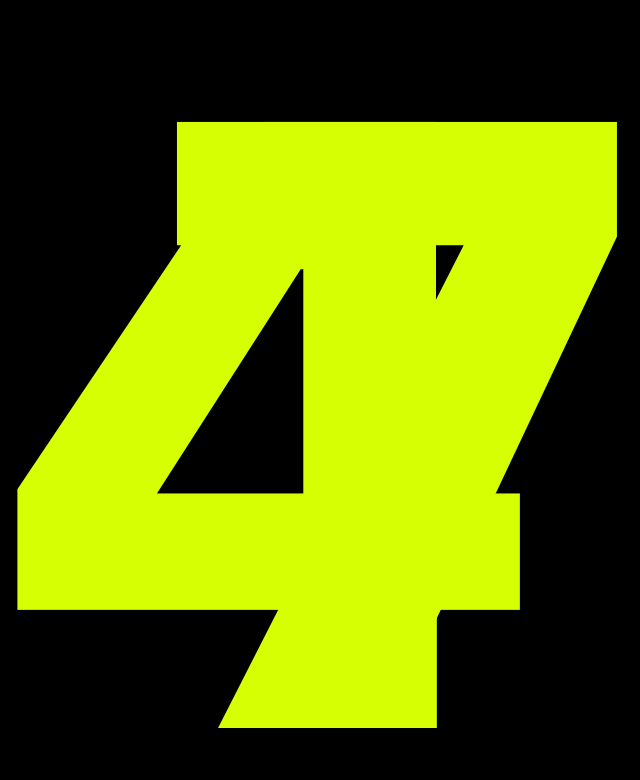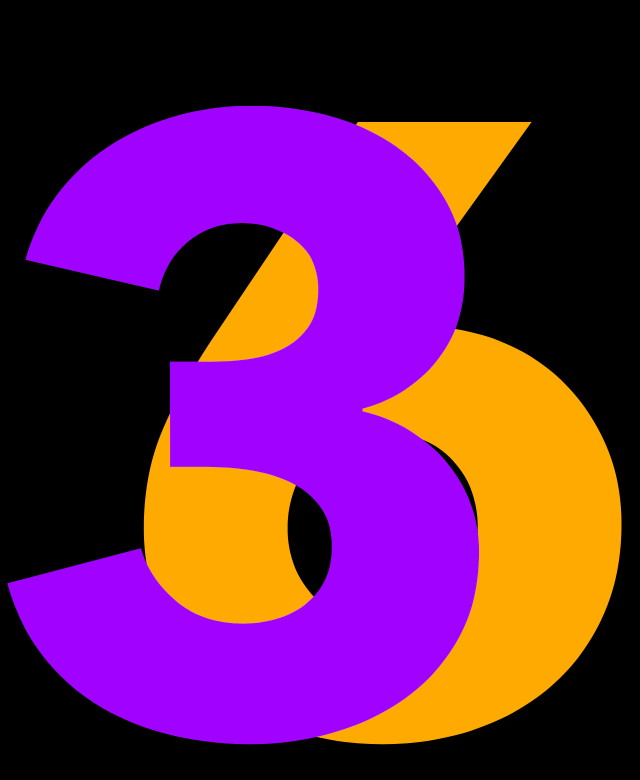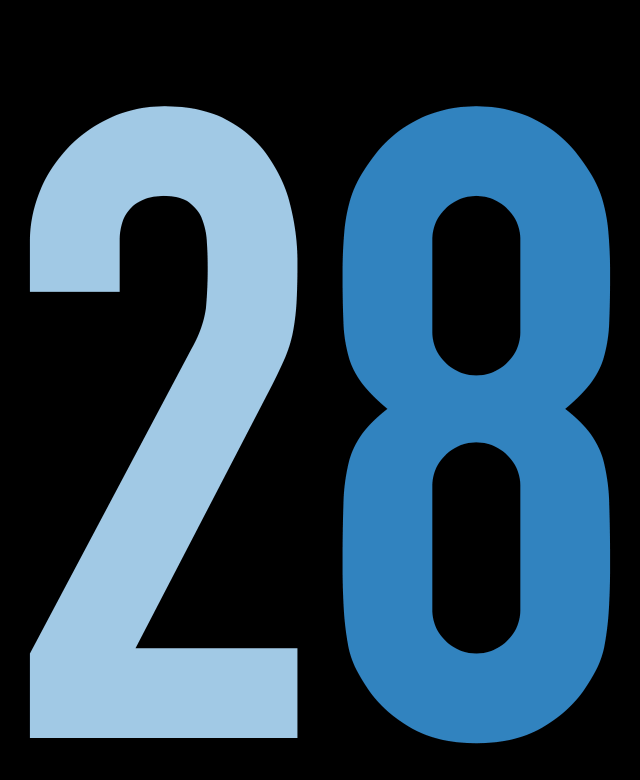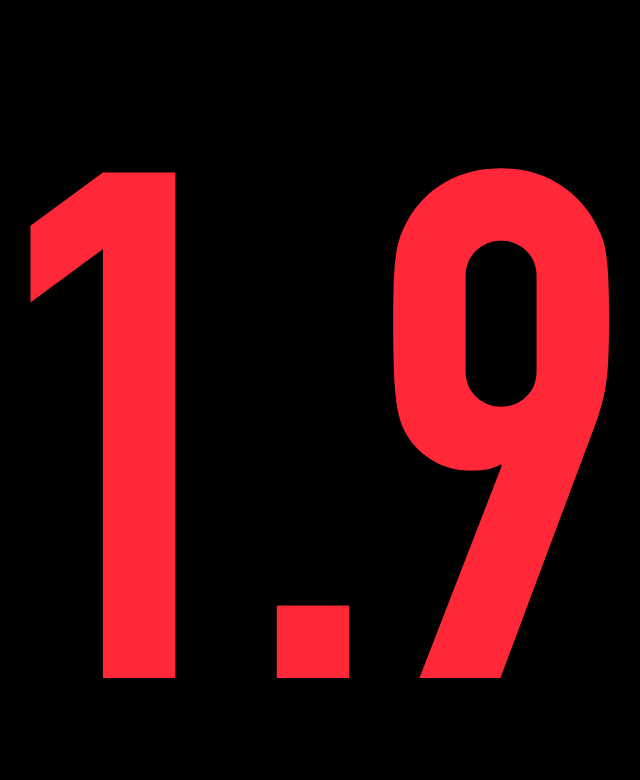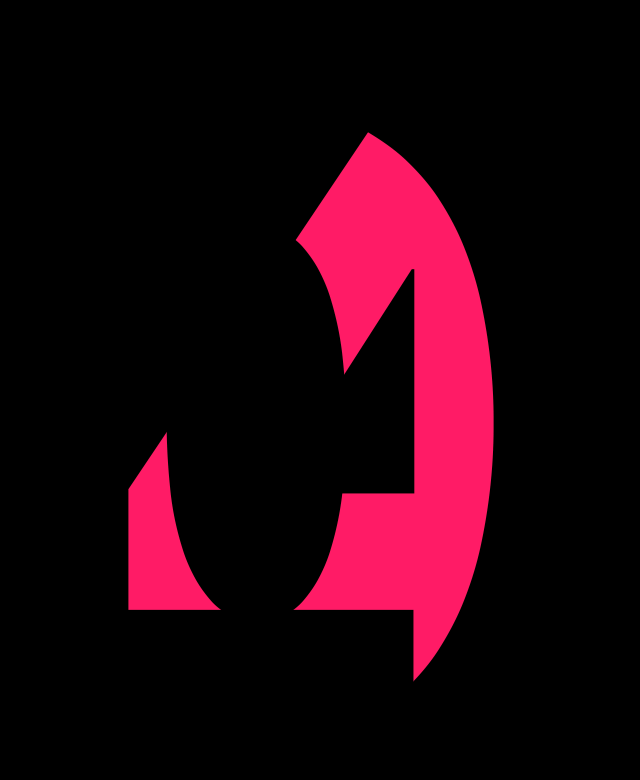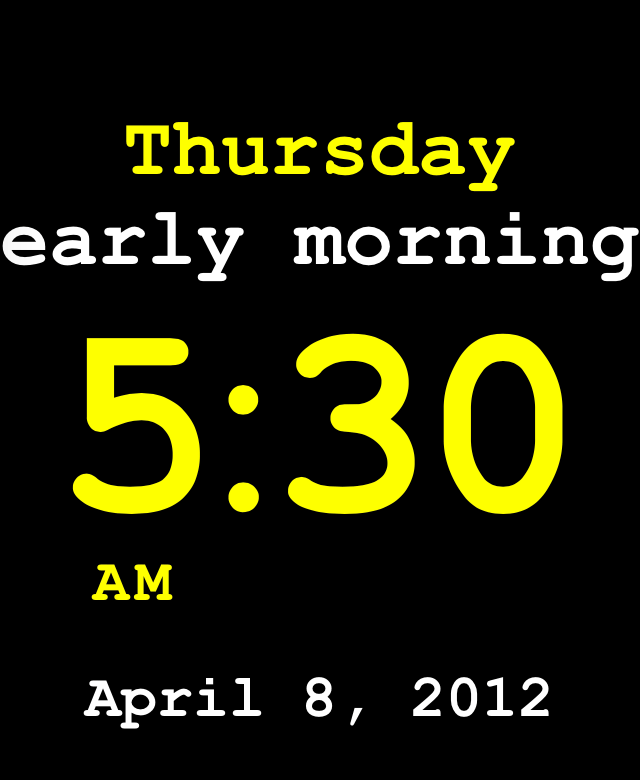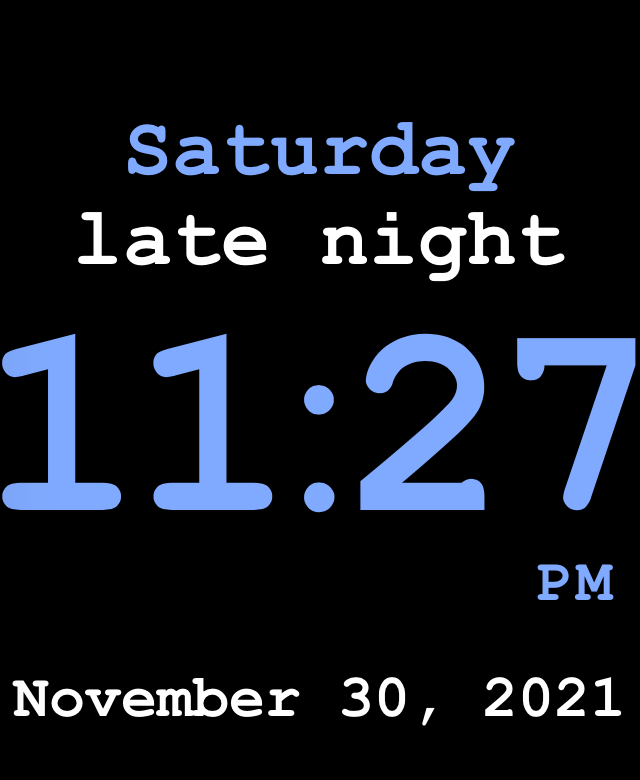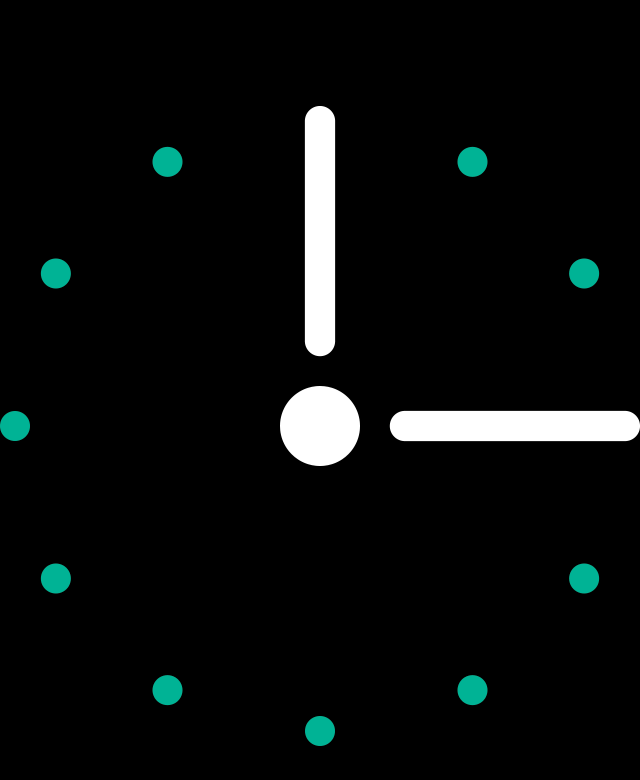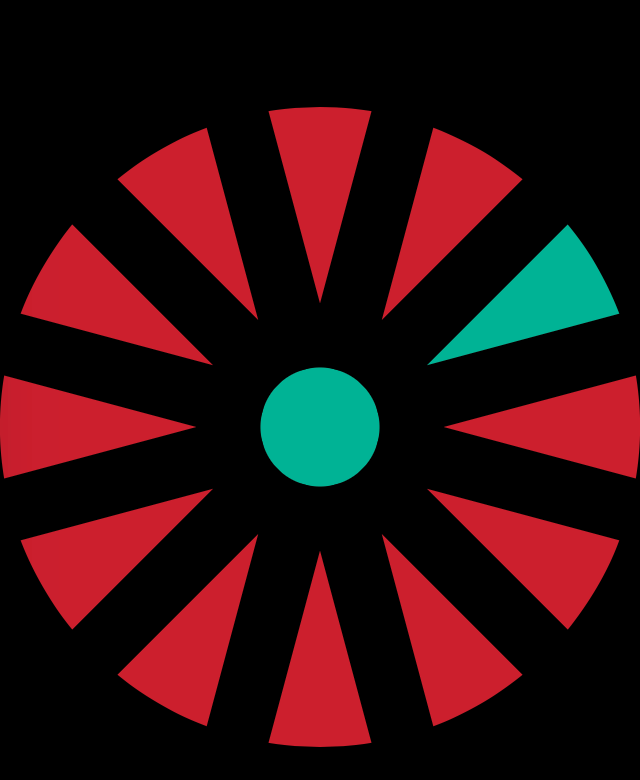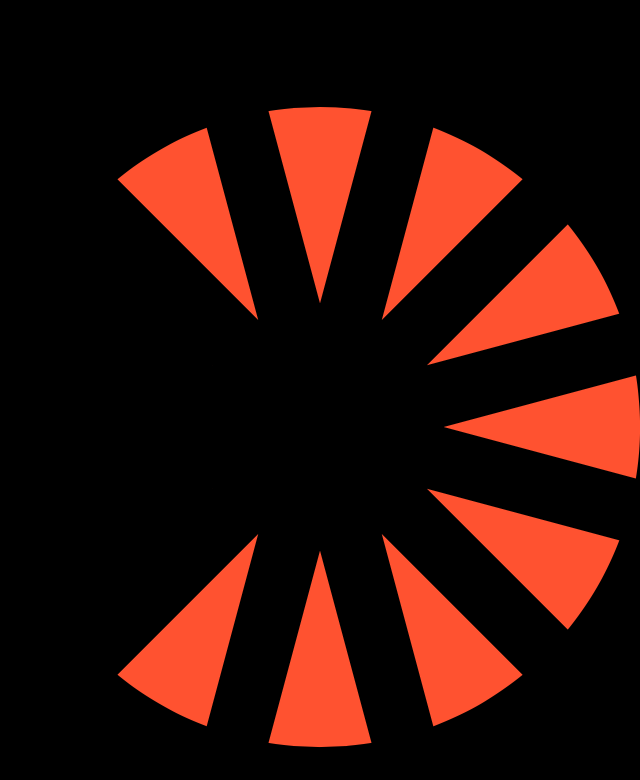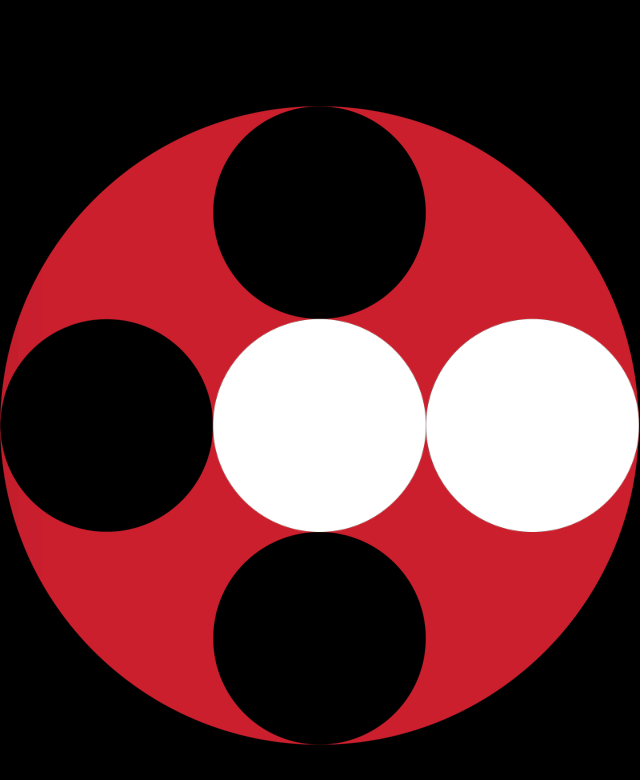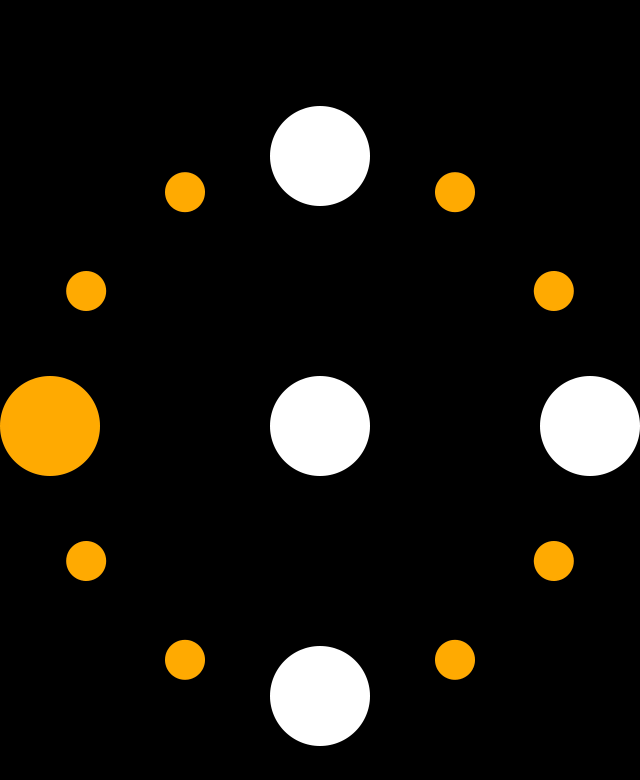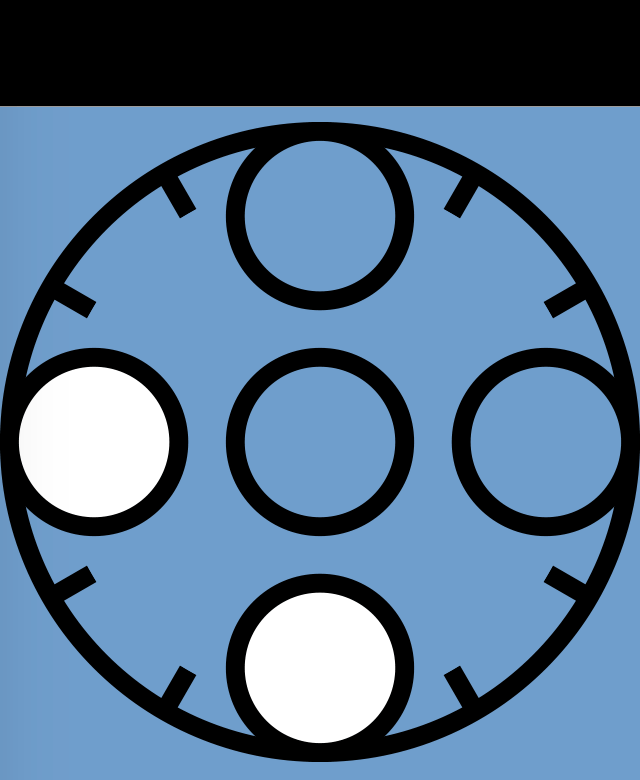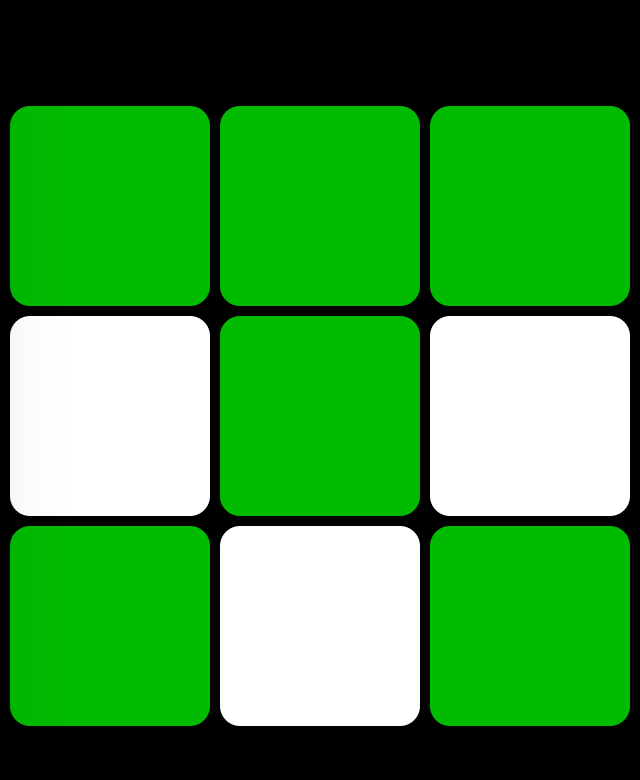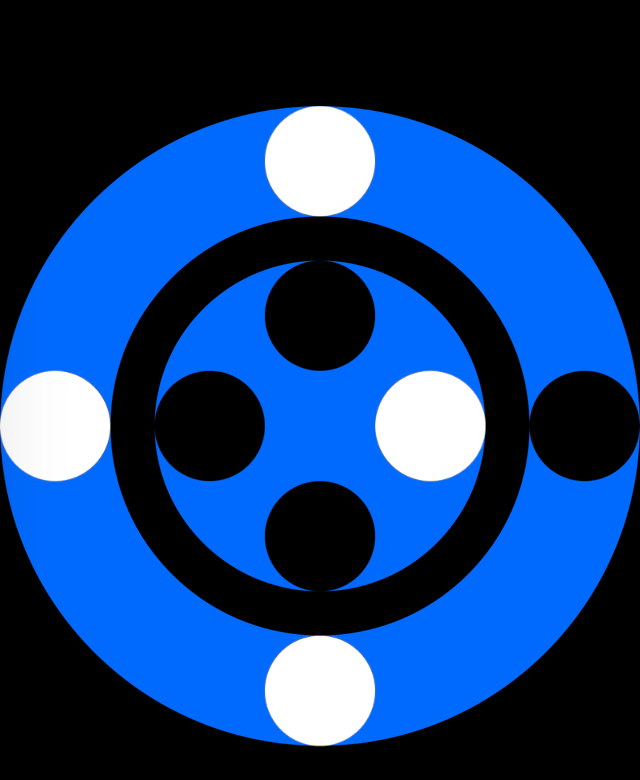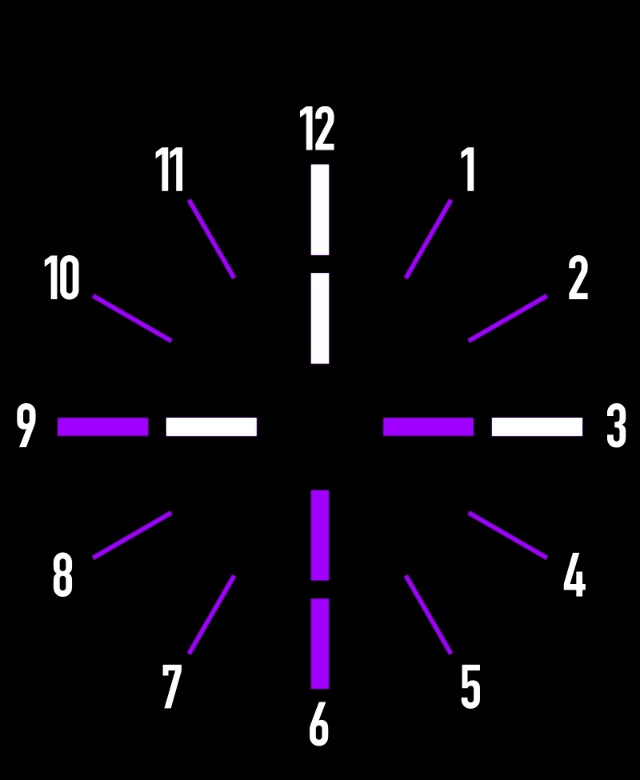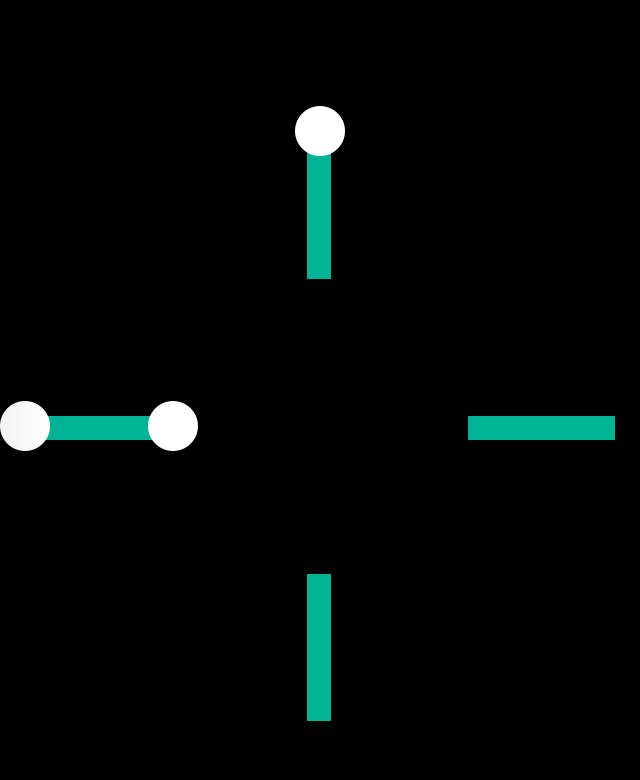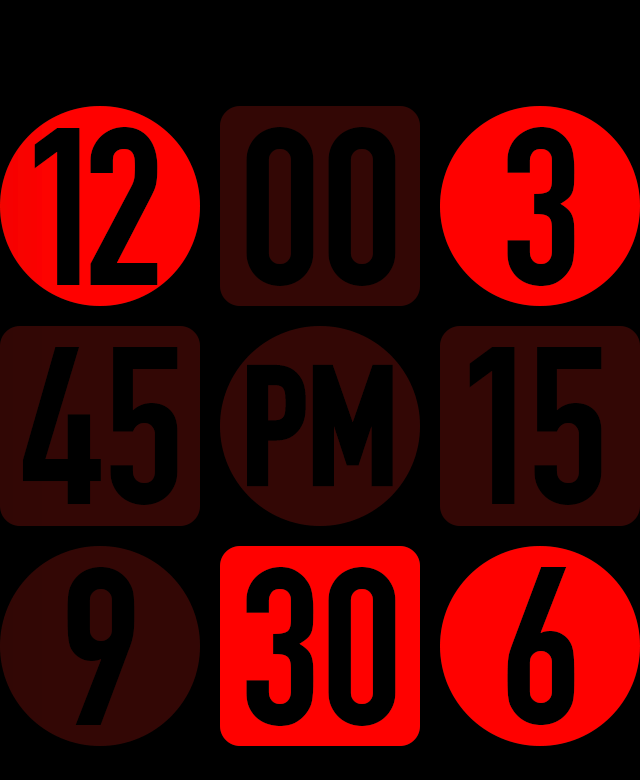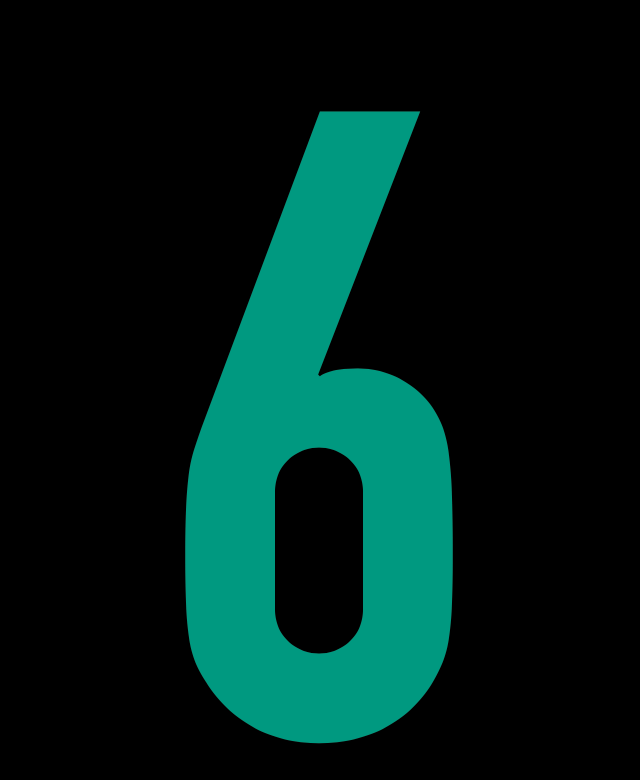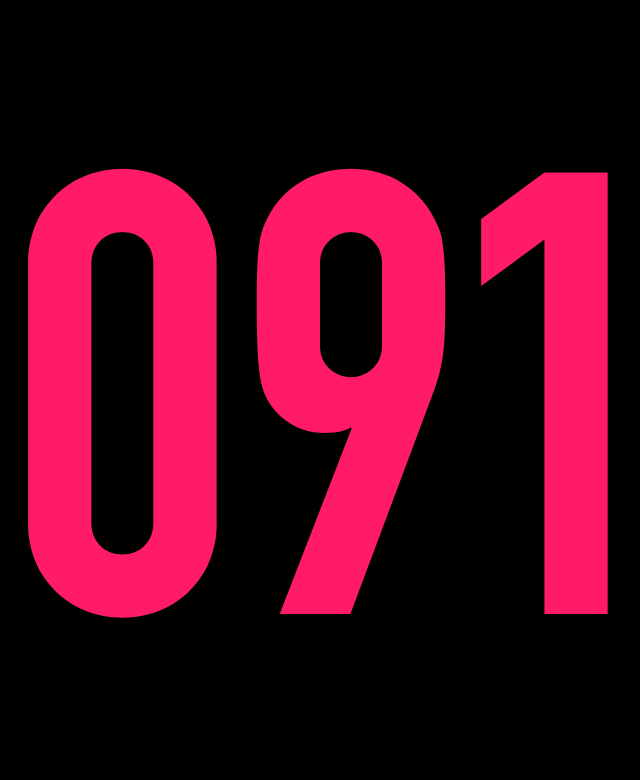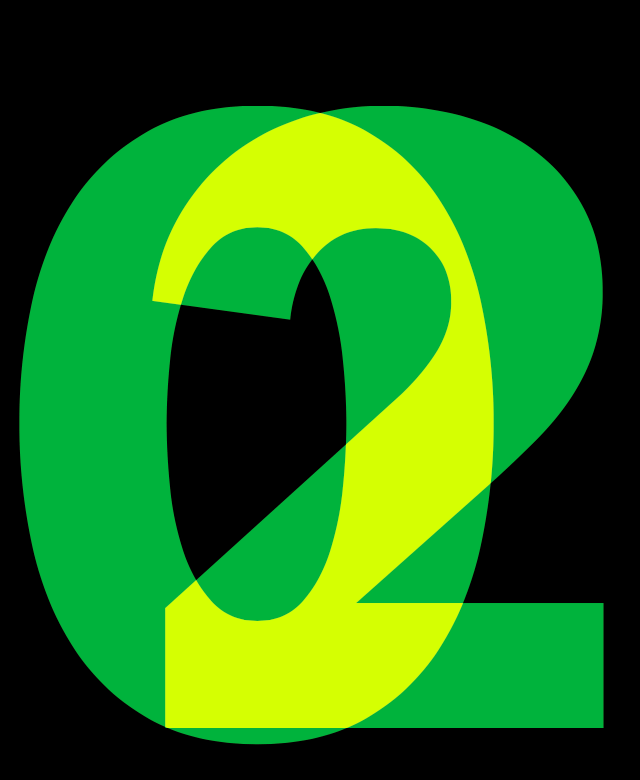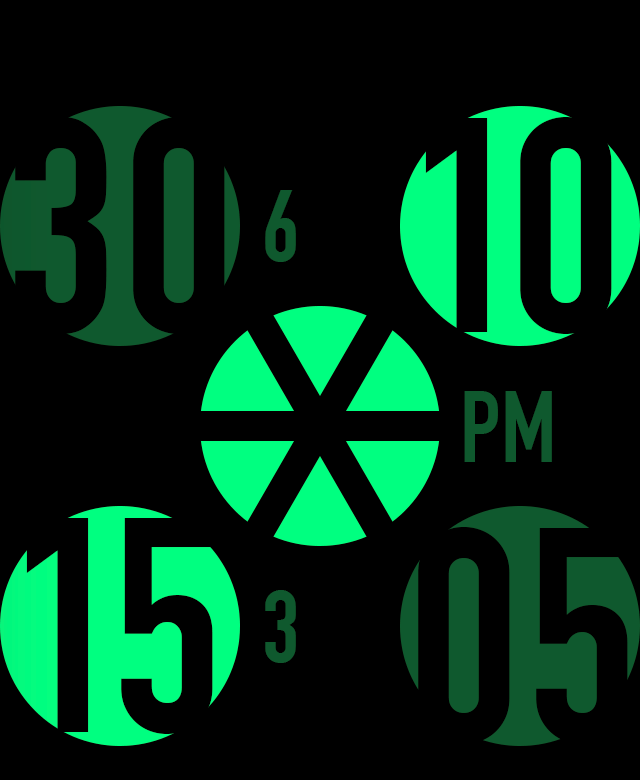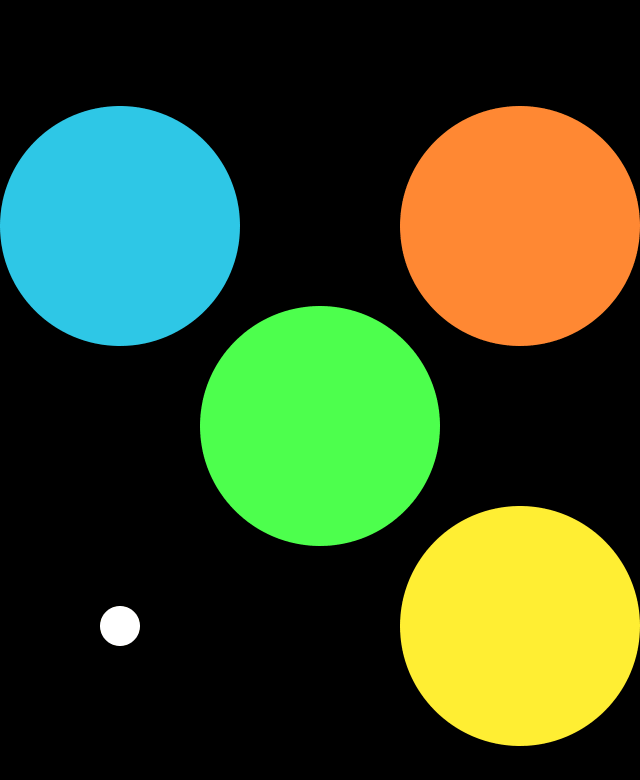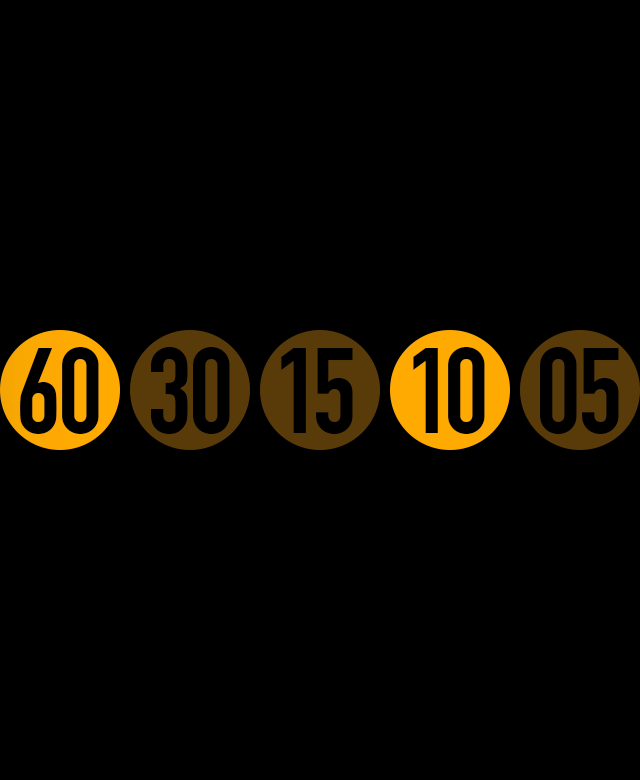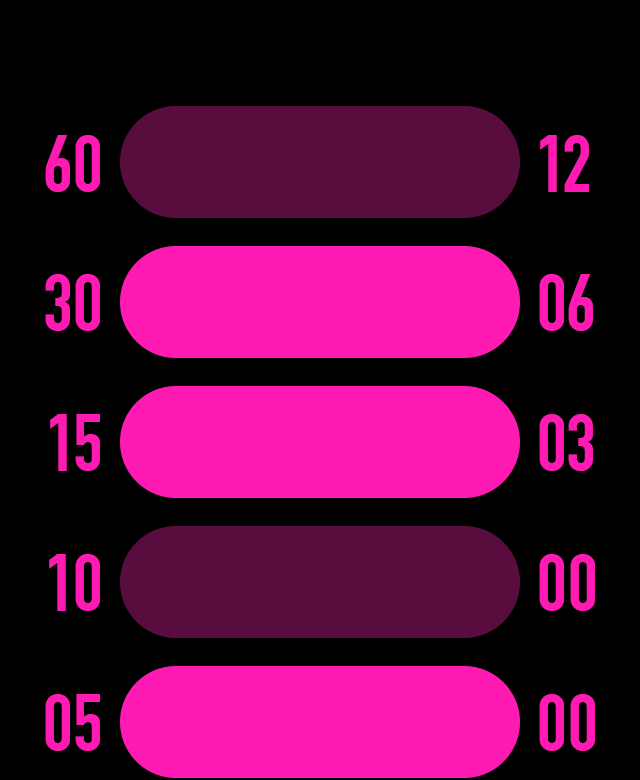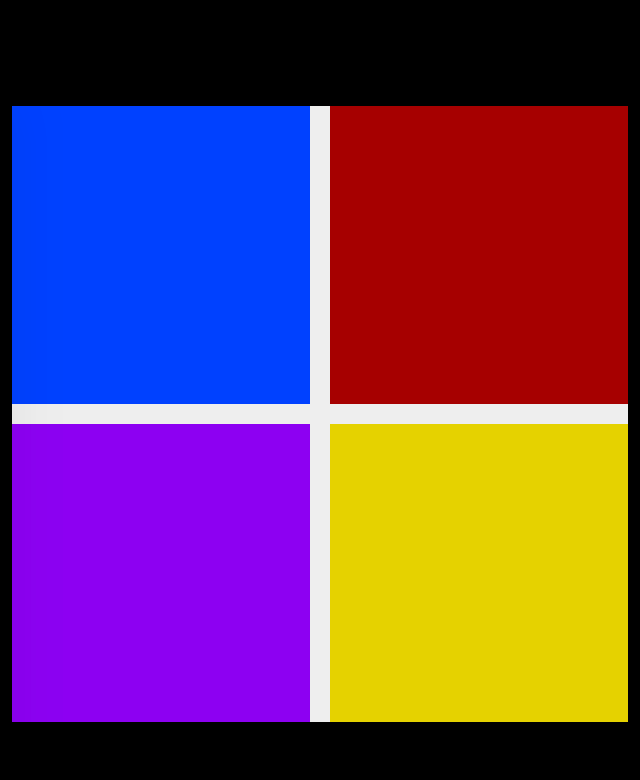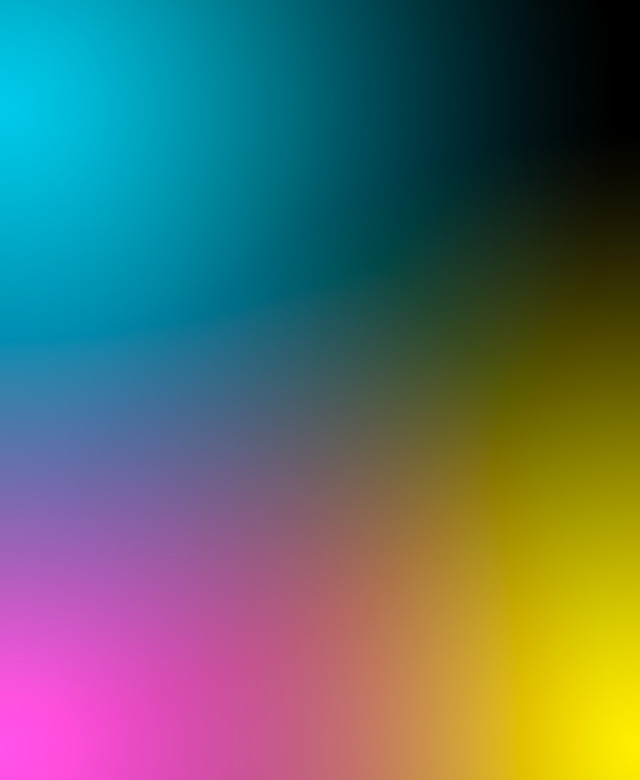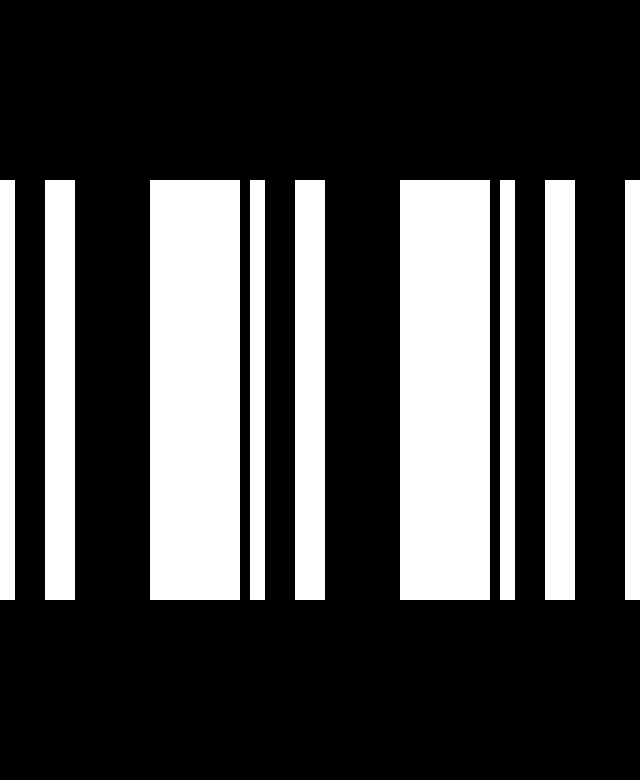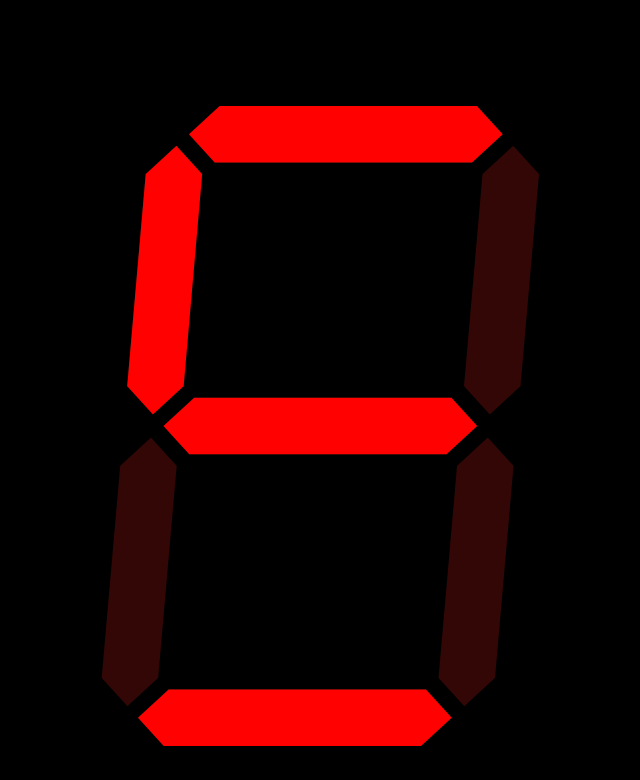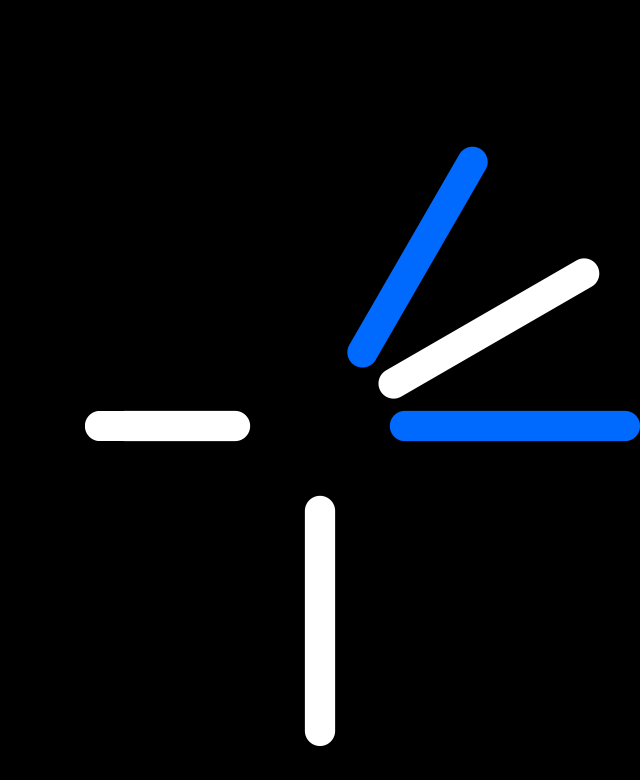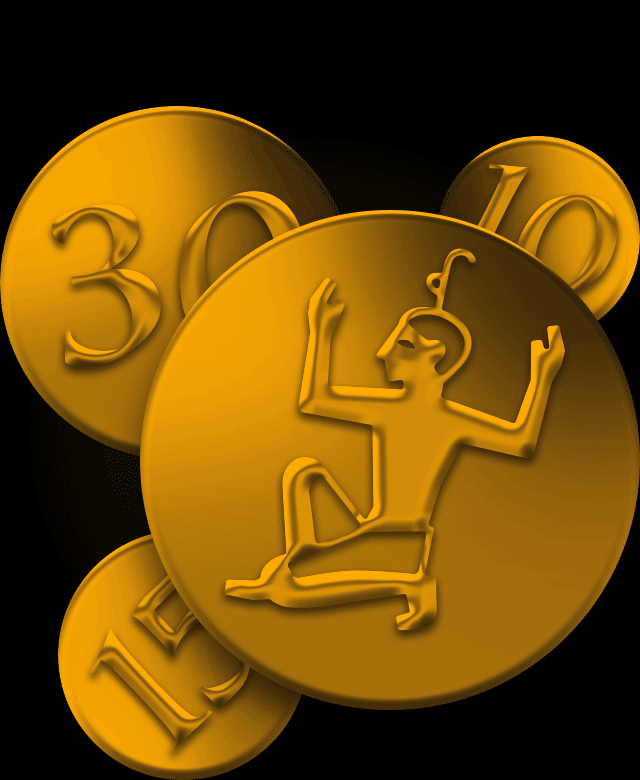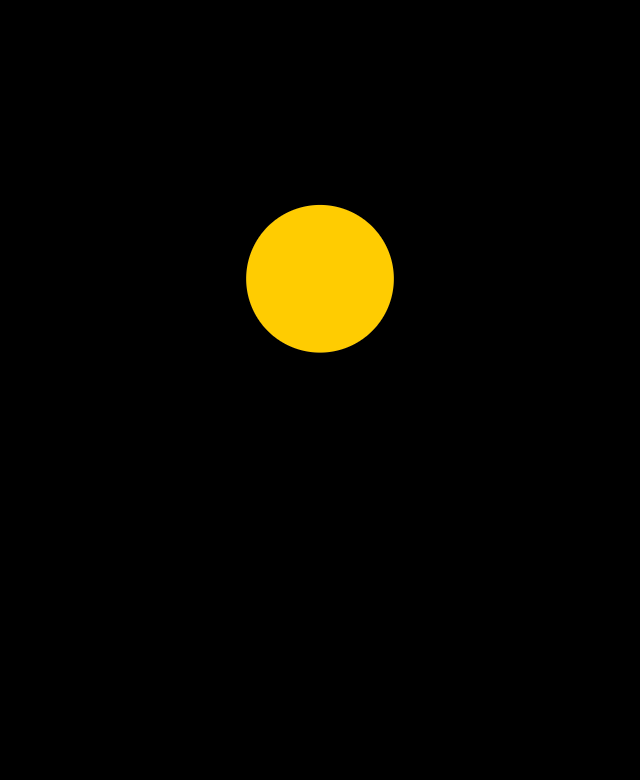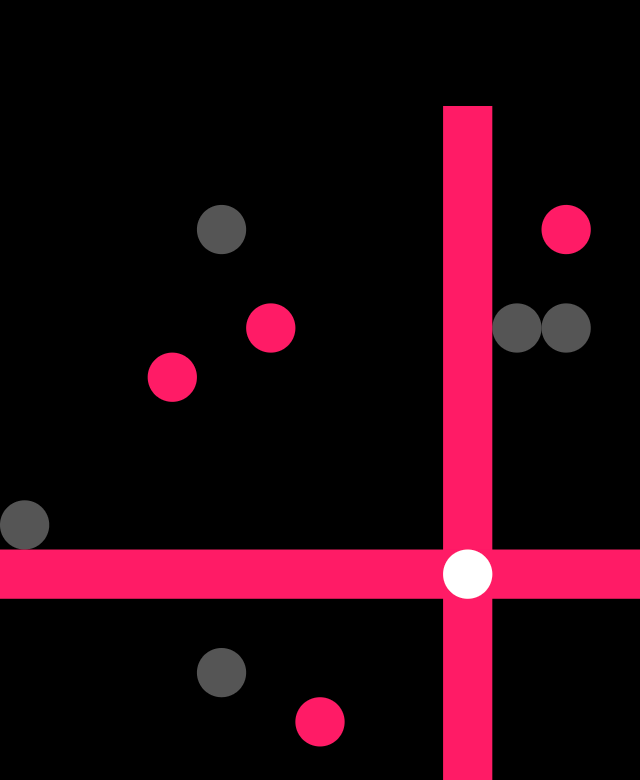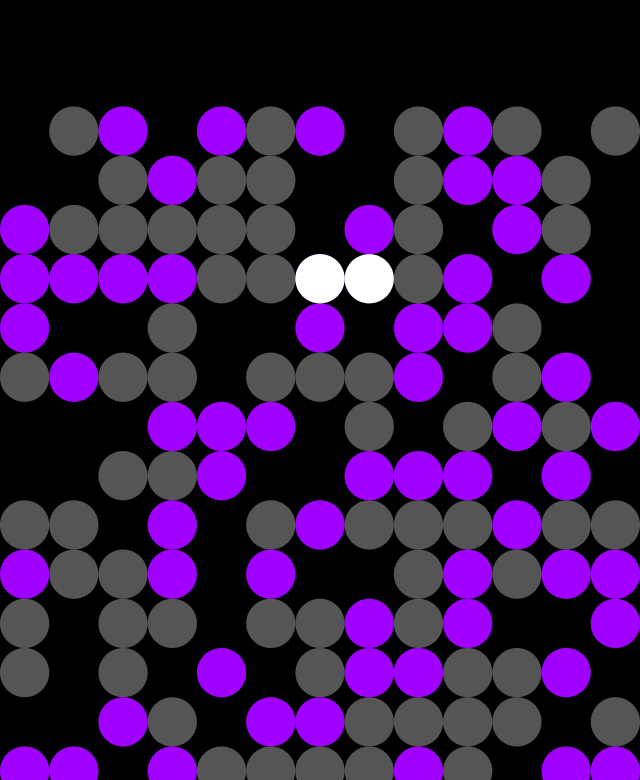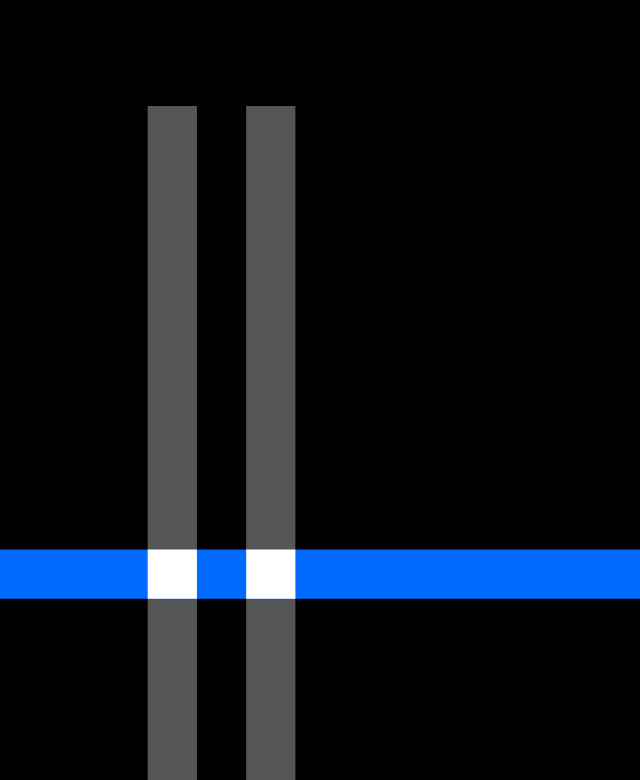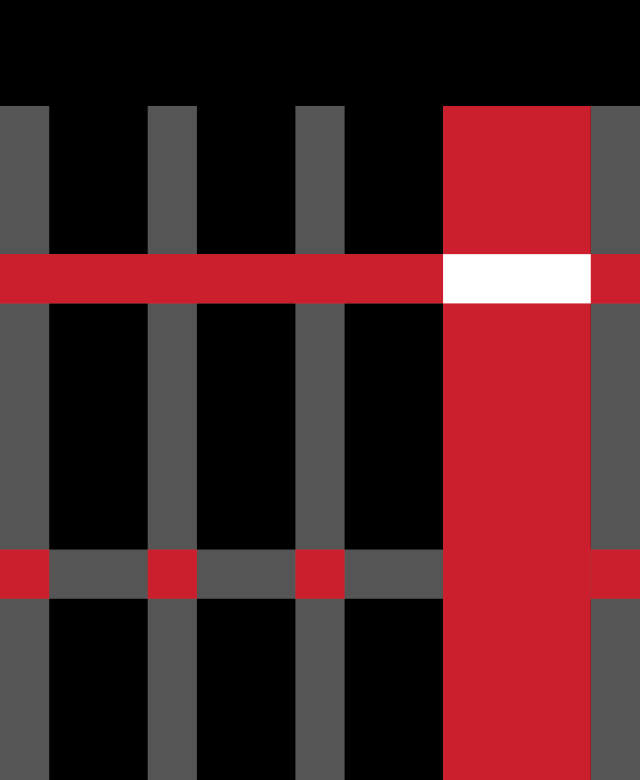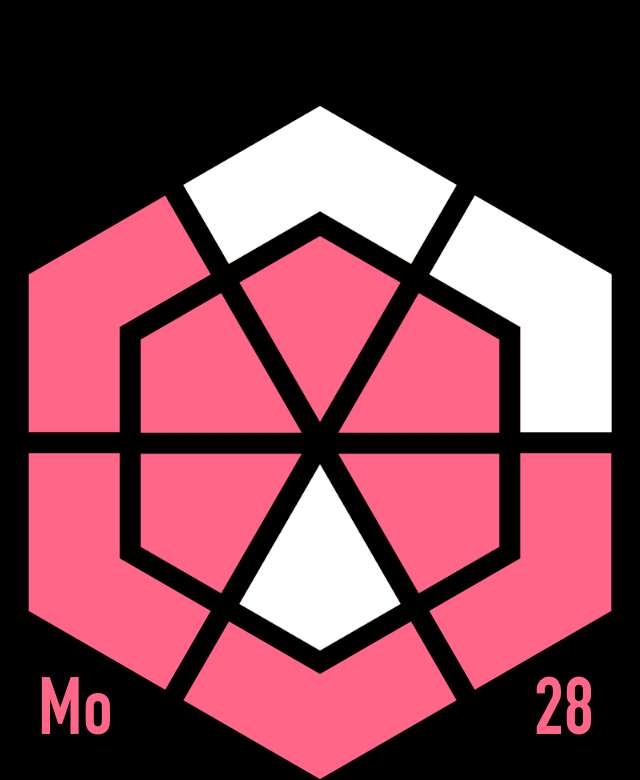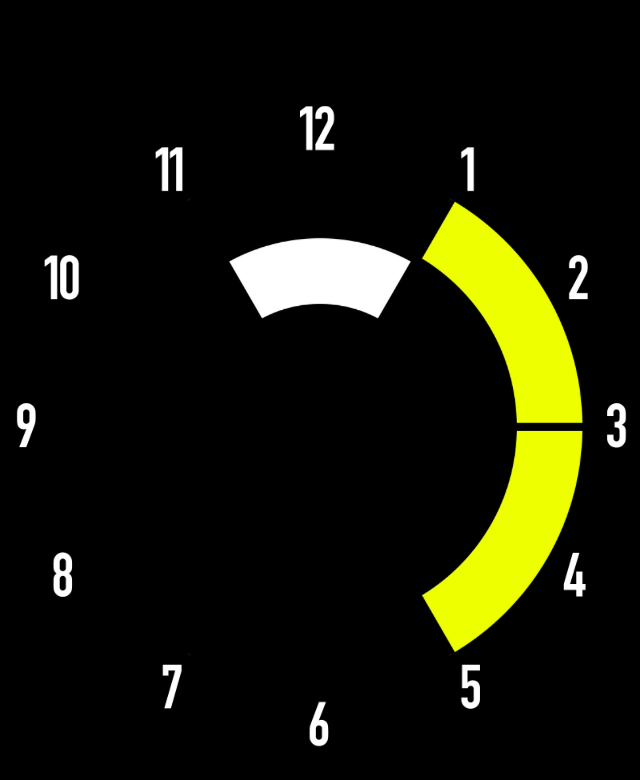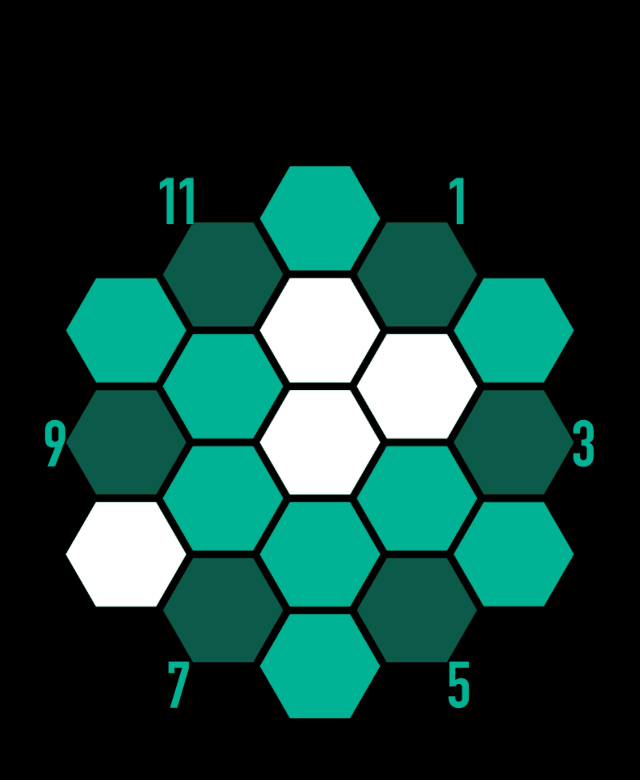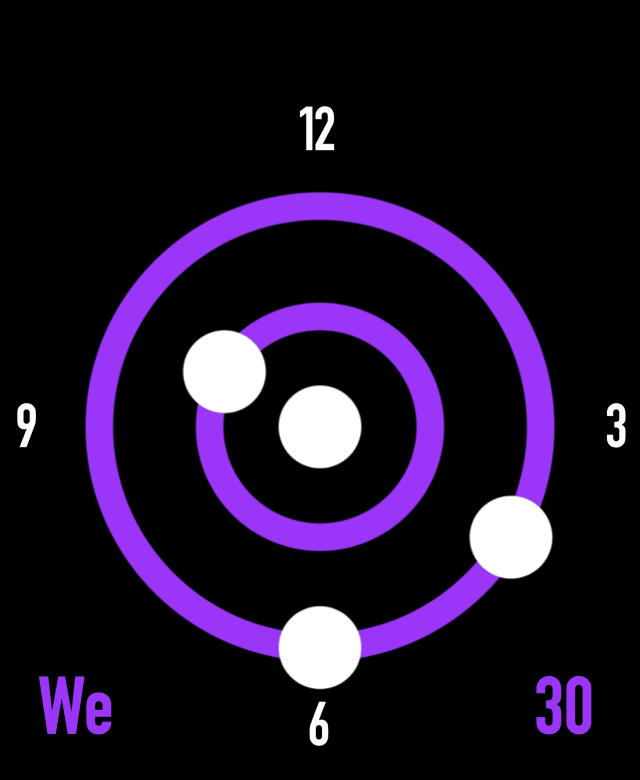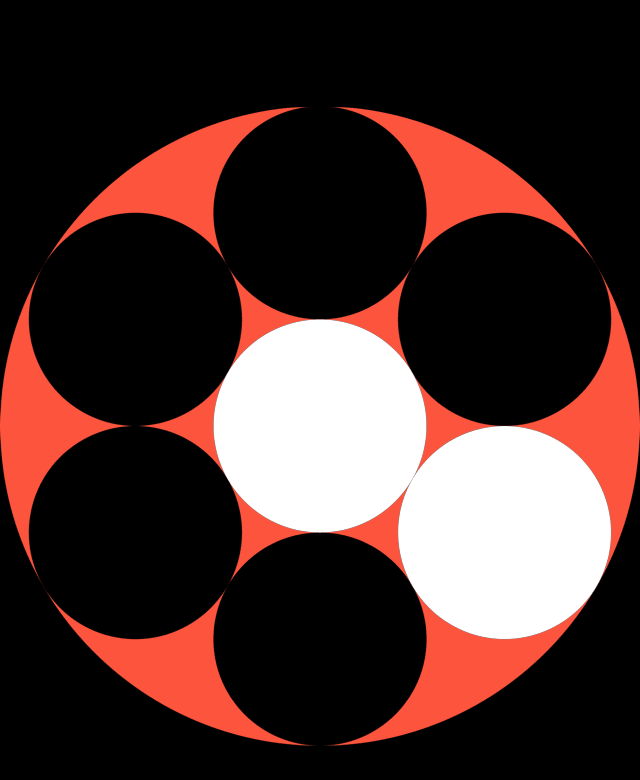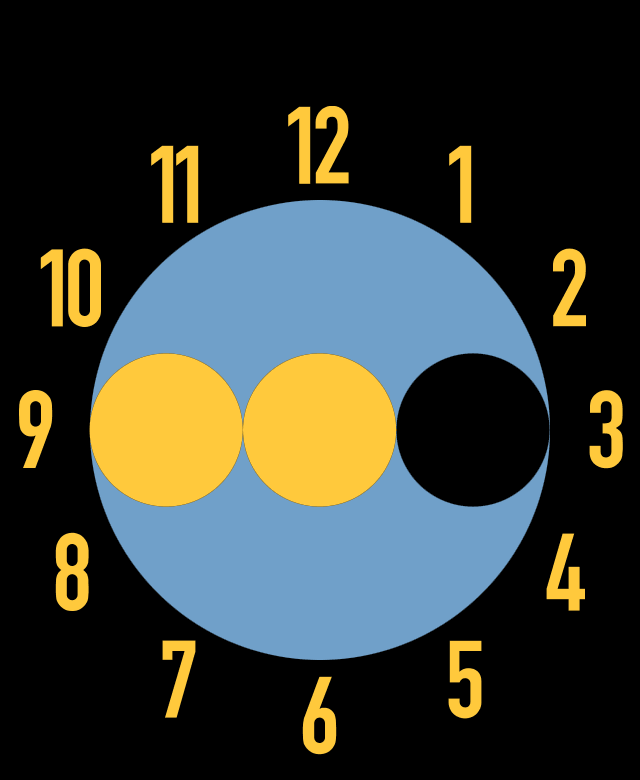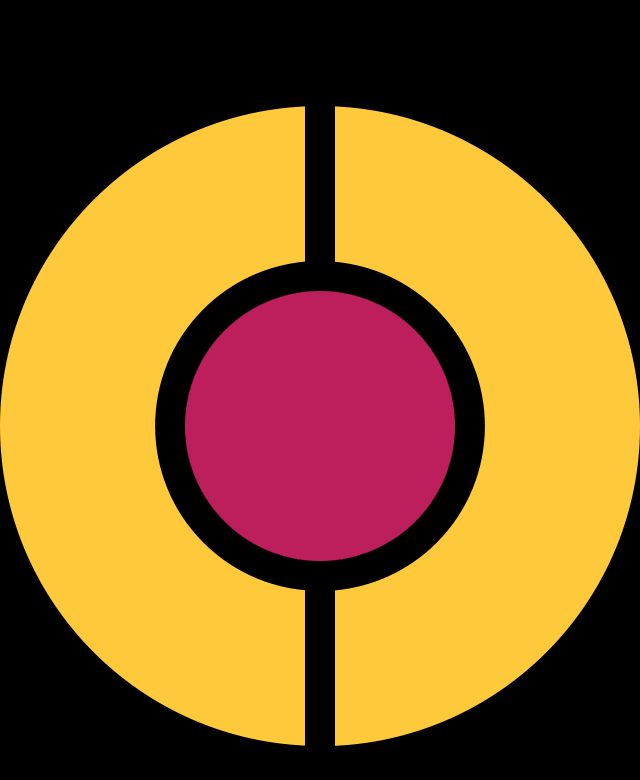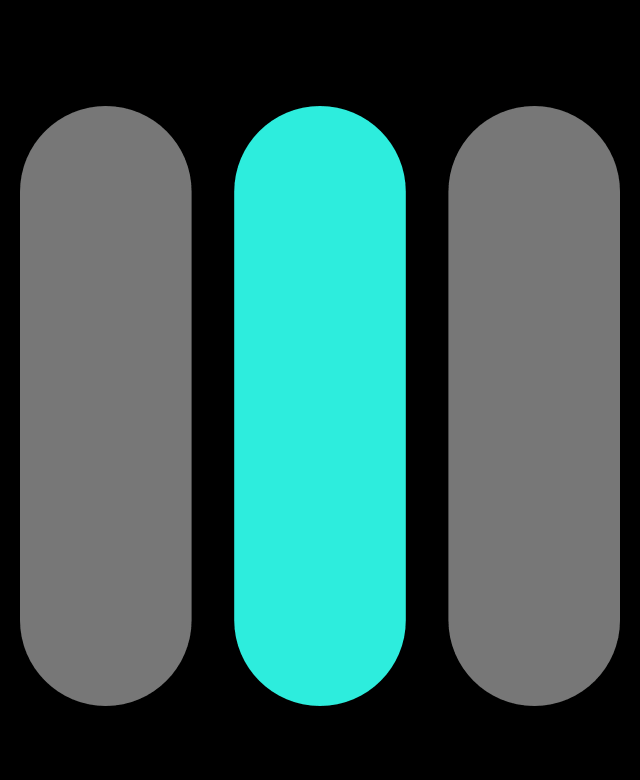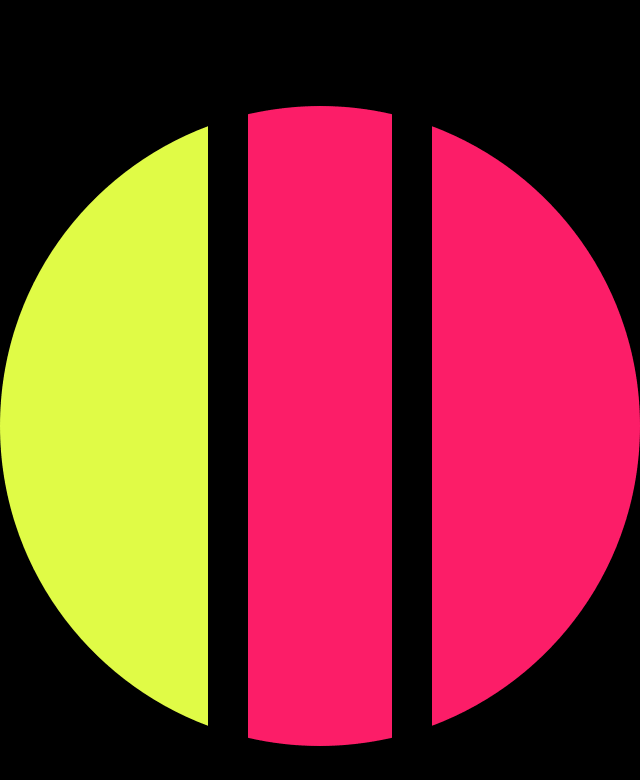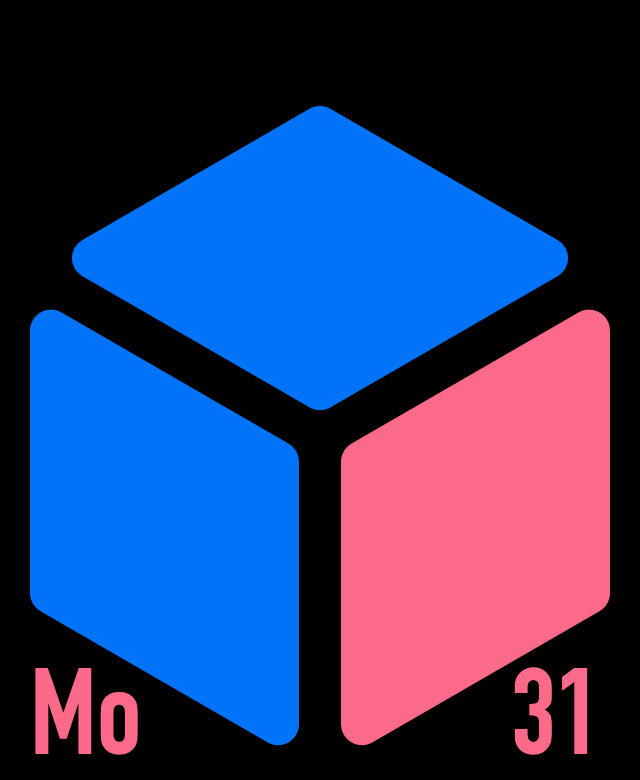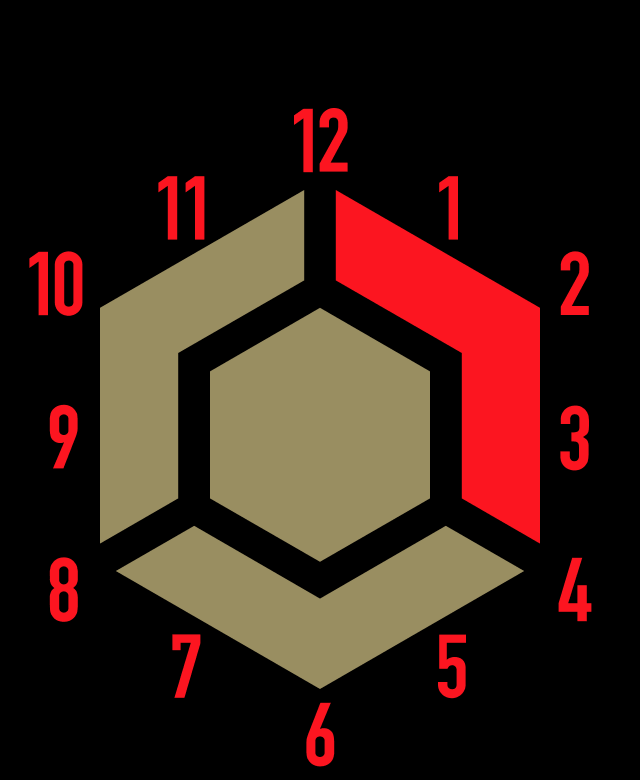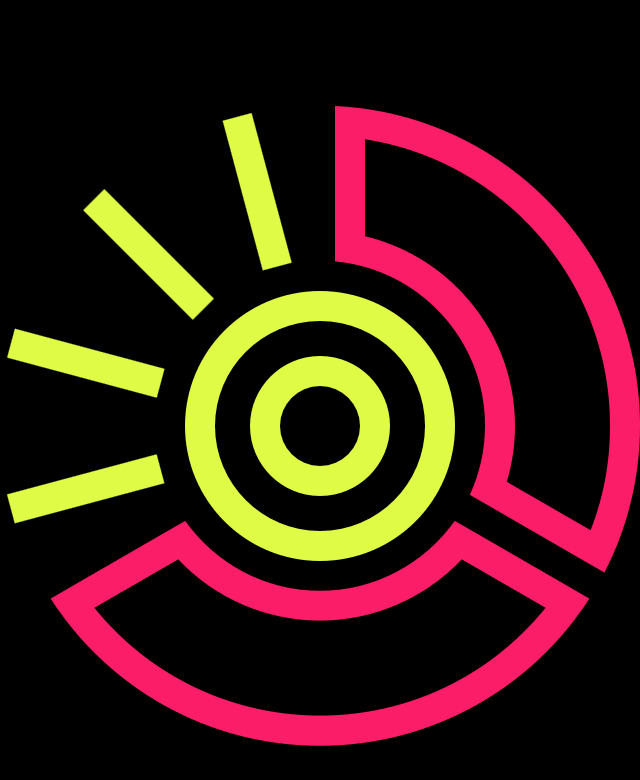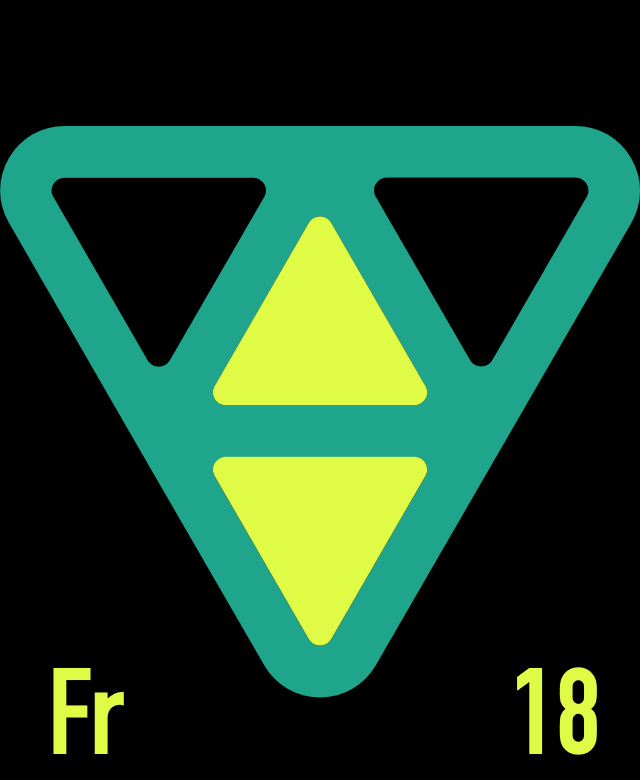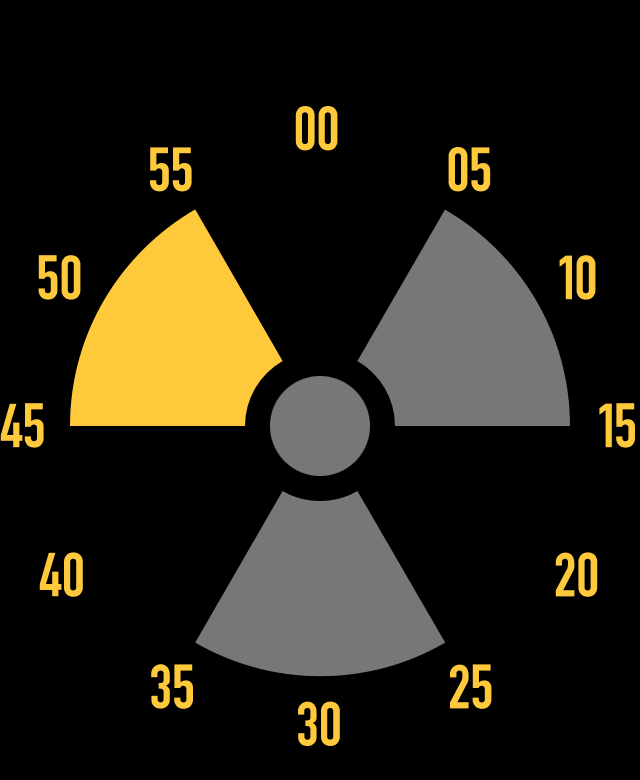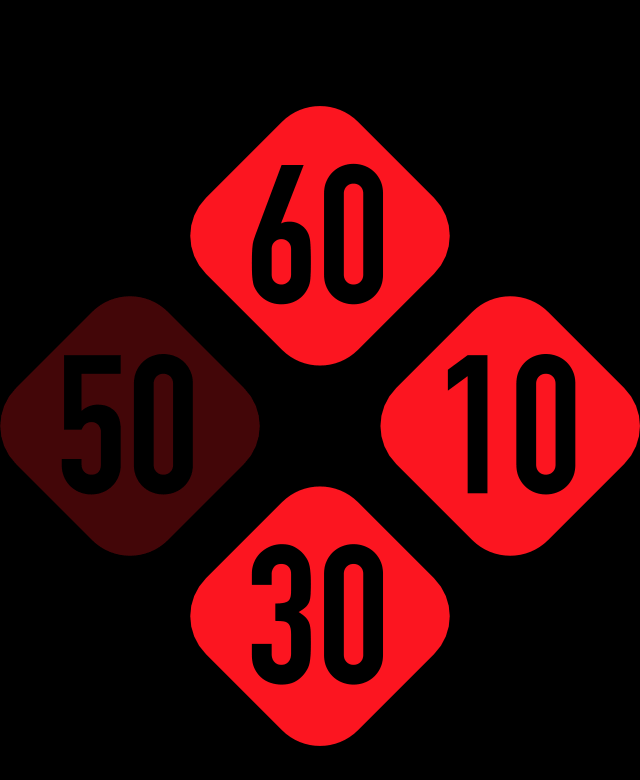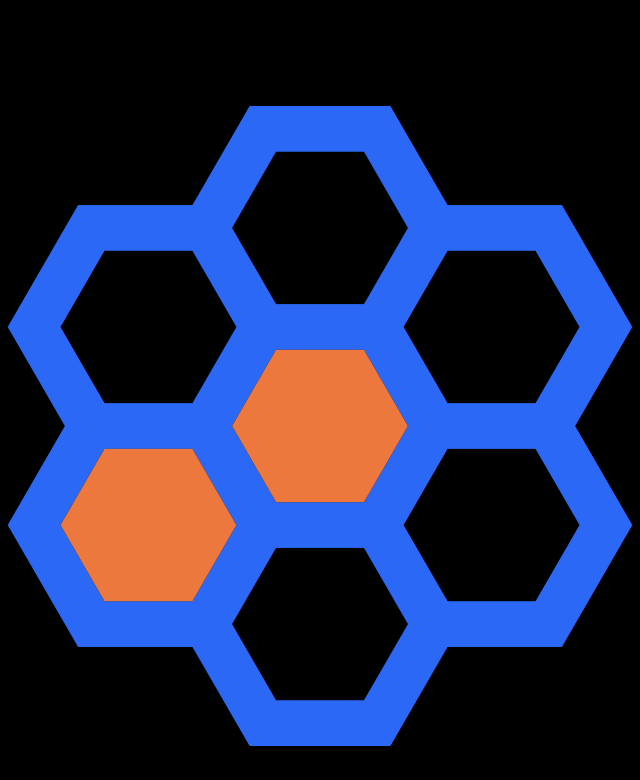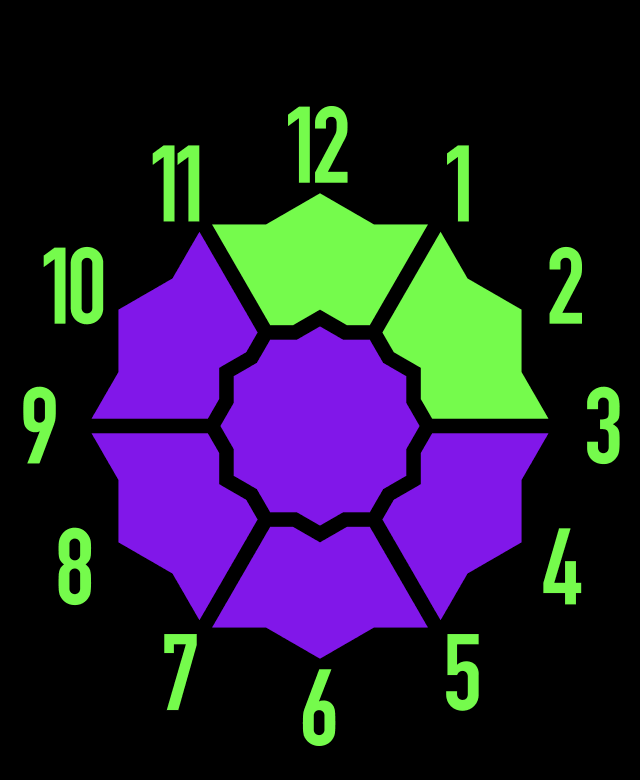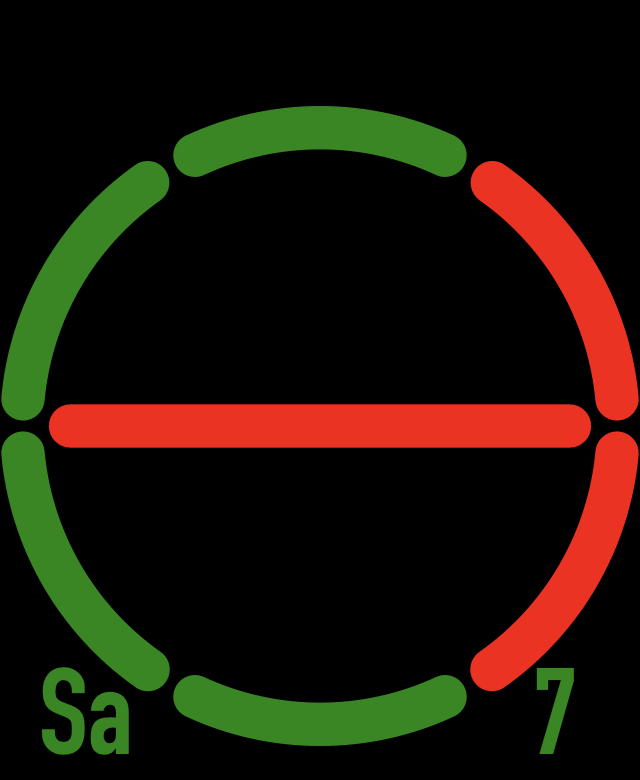Weird clocks that run on any device with a modern web browser.
These are 17 functional, animated, third-party analog and digital watch face apps designed to run in the Apple Watch’s built-in WebKit browser. Once started, they can continue running without an Internet connection. If you wish, they can appear automatically when you raise your wrist or tap the screen. Each includes multiple colors, styles, and options, such as a high-speed Demo mode.
To access all of these faces on your Watch at once, send the Install link to yourself as an email or text message, then view that page on your Watch. You can also use these timepieces on an old phone or iPad/tablet as a desk or wall clock.
These watch faces are experimental. They are offered as-is, intended only for entertainment, and may have bugs. I wanted to explore unusual graphic designs, artistic effects, and alternative methods of communicating time. Some of these faces show the time in ways that are not obvious until you know how to read them, but they are simple once explained.
Some of these are also available in Playtime: my collection of 50 alarm clocks for the Playdate handheld game console.
— Morgan Adams
— AdamsImmersive.com — Mastodon
Analog Watch Faces
Chapter Arc
A single-hand watch face that always focuses on the current one-hour arc of the chapter ring (the ring of markings on a clock). The only hand is the “hour hand,” but it is not needed to tell the hour—it is used to indicate the minutes. This example: 2:26.To help you quickly learn to read the various included arc styles, A Zoom mode shows the arc in the context of the entire 12-hour face, and a Step mode lets you test how any time looks.
Includes 11 different arc styles and 9 colors. Try It
A single 5-minute dot is also added—indicating the nearest 5-minute mark. When the nearest 5-minute mark is an exact quarter, there is no added dot. This example: 5:25.
Phi
The large circle is the dial itself, with a circular hour “hand” inside the dial, and the minute “hand” outside the dial. The dial is off center so the circles can be larger (sized by the golden ratio, φ).To make it easier to read the time despite the lack of visible indices, both hands snap to the nearest exact 5-minute or hour mark. This avoids any ambiguity of the hands being halfway between two marks. This example: quarter past one (hands on :15 and 1:, even if the exact time is 1:14 for example).
This snapping makes this is a low-state face, but a full analog mode is also included, as well as a mode that snaps to the current hour rather than the nearest hour mark. Includes 18 color themes. Try It
Sector
A progress ring replaces the minute hand and snaps to the current minute, with a “pie chart” hour hand that is always snapped to the nearest hour. This example: twenty-three to four.Includes 8 color themes, both circular and full-screen shapes, and a mode that snaps to the current hour rather than the nearest hour. Try It
Thylacine
A more traditional analog face, constructed from isosceles triangles. The hour hand is shorter on the inner end as well as the outer end, and the hour indices are extra long.Most of the included styles have a small mark (at :03 here) that serves as a sweep second hand.
Includes 25 color themes, 9 full-screen styles, and 9 round styles. Try It
Digital Watch Faces
Labyrinth
Large numerals overlap in a maze-like pattern. The color-filled areas are random and only decorative; the dividing lines are what define the numbers. This example: 12:58.Optionally, the filled areas can blink to a new random color as much as every second.
A “Digits” control lets you display either hours or minutes alone. See All Digits
Includes 38 color themes. Try It
Intersect
This digital face displays a large two-color minutes number, plus the hour parity: even or odd. In practice, that’s usually enough for your internal time sense to tell you the exact hour.If the digits are highlighted in the brighter color (leaving the darker color for the overlapping areas) then the hour is odd, as in this example: 1:52. (Your internal time sense can tell you that it’s not 11:52, nor 3:52.) The display would look the same for any “ODD:52” time.
Includes 8 digit styles and 9 color themes. Try It
Verbose
Designed to help people facing cognitive impairment, this face makes the time extra clear using natural language: “midnight,” “very early,” “early morning,” “morning,” “late morning,” “noon,” “midday,” “afternoon,” “early evening,” “evening,” and “late night.”(Also available in a desk clock version for a phone or tablet in horizontal orientation.)
Includes 8 colors. Try It
Low-State Watch Faces
I wanted to try communicating the time using the fewest states possible. I have concluded that 24 states are sufficient to be useful for most everyday timekeeping purposes. (Or even fewer when approximate time is acceptable.)
Most of these “low-state” faces reduce the hours information from 24 states to 2 by conveying only the hour parity: even or odd. Example: at 10:30 AM, these faces will only tell you that the hour is even. But your internal time sense can easily tell you that it’s not 8:30 AM, nor 12:30 PM.
Minutes information is reduced from 60 states to 12 by quantizing time to the nearest 5 minutes. (Informally, analog time is often quantized the same way: “quarter past,” “ten to.”) I have chosen not to indicate the “last-passed” 5-minute mark, but rather the nearest one. So at :44 minutes, these faces indicate “about :45“ rather than “some time after :40.”
Approximating the minutes in this way still tells useful time—but it means that these low-state faces can be up to 2.5 minutes ahead or behind at any given moment. The average error magnitude is half that—75 seconds—which is only 45 seconds worse than a perfectly-set digital watch or clock. Digital watches run behind 100% of the time. The time they display has always already passed, as much as 60 seconds previously (for watches without seconds) and their average error is half that: 30 seconds.
As an alternative to hour parity, some of these faces (and Phi above) have the option to display 12 hour-states and provide the exact hour. 12 states for hours and 12 for minutes makes 144 states total—still 1/10 as many states as a typical digital watch. And an optional AM/PM indicator on some faces provides full 24-hour time with only 288 states.
(For the half-minute between 2.5 and 3 minutes past a 5-minute mark, these low-state faces may appear to be rounding incorrectly when compared with a digital watch. At 12:02:35, for example, a digital watch without seconds shows 12:02, making the nearest 5-minute mark seem to be 12:00. But digital watches are always behind. These low-state faces correctly round up to 12:05, which is the actual nearest mark.)
Wheel
A low-state interpretation of a traditional analog watch. One of 12 segments is highlighted in a contrasting color to show the nearest 5-minute mark.The center dot indicates the parity of the hour that the time is nearest “to” or “past,” changing between half-past and twenty-five-to. When the dot is highlighted in the contrasting color, the nearest hour is odd. Otherwise, the nearest hour is even. This example: “about” ten past nine. The display would look the same for any “ten past odd” time.
Includes 12 color themes; optional “triad” modes that highlight exact quarter-hours; both circular and full-screen shapes; and a mode that indicates the current hour rather than the nearest hour. Try It
Beast
9 pieces combine into 24 different imaginary beasts, becoming increasingly elaborate as each hour progresses. The tail (2 variations) tells the hour, the body (4 variations) tells the quarter-hour, and the head (3 variations) counts the minutes after the quarter.Even-parity hours show a beast with a fish tail (2 points, aimed downward); odd hours use a devil tail (1 point, aimed upward).
Includes 9 colors. Try It
Cardinal
A face that tells easily-readable time with only 5 “lights.” The 4 outer lights take the place of an analog minute hand.The center element, taking the place of an hour hand, lights up for odd hours. (By default, this face indicates the hour that the time is nearest “to” or “past,” changing between half-past and twenty-five-to.)
Minutes are read to the nearest 5. When there is only a single minute light, that puts the “minute hand” on an exact quarter-hour: This example: quarter past “odd.”
When there are 2 or 3 minute lights in a row, look at the first light (counting clockwise). For 2 lights, add another 5 minutes past that quarter. For 3 lights, add 10 minutes.
Includes 32 different styles, 16 colors, 10 optional numeral sets, and optional blinking seconds. Try It
The number of minute lights tells you which mark to read within the lit range: 2 lights means to read the second mark. 3 lights means the third mark. This example: ten past “odd” (:10 is the third mark in the lit range, :00–:30).
The large, easily-distinguished shapes of certain styles may make Cardinal useful for vision impairment.
The 4 corner squares in this style do nothing. This example: twent-five past “even.”
(Compare to digital watches, which need at least 28 lights/elements, and binary watches, with 10 to 20 lights.)
Twenty-Four
This is a low-state digital face, showing the numbers 0 to 23 for the 24 possible states.If a number from 0 to 11 is displayed, multiply it by 5 to get the minutes to the nearest 5. This example: EVEN:30 (6 × 5).
If the number is 12 or greater, subtract 12 first. This indicates that the hour is odd.
Includes 9 digit styles and 9 color themes. Try It
5-Bit
The minimum number of “lights” or binary bits able to display 24 distinct states is 5. All the variations of this face have 5 indicators with 5 different values, which are added together when lit. The central indicator is the hour parity (lit when even). The other 4 convey the minutes.The left pair of minute bits tells the current quarter-hour. The upper bit means :30 and the lower bit means :15. Both added together is :45, and both off means :00.
The right pair adds either :10 (upper) or :05 (lower) past the quarter. Both off means an exact quarter-hour. One way to read the bits is simply to add them all together: :30 + :15 + :05 = 12:50 in this example. (The hour bit lit means any even-numbered hour.)
Just remember that the top 2 lights are :30 and :10, and the bottom 2 are half that. Quick Reference
Certain styles may be useful for vision impairment: 5 lights are easier to distinguish than numerals.
Includes 17 different styles and 9 colors. Try It
An optional “Cave Mode” (sometimes with added labels as seen here) is an experiment to make use of the remaining 8 states. It provides precise-to-the-minute 24-hour time at 8 moments during the day. Just what you need deep underground!
The two quarter bits (left side) now indicate the hours quarter, 6:00 or 3:00 (hours past 12:00 AM). Both together add up to 9:00; both off means midnight: “zero past” 12:00 AM. The parity bit lights up for PM time (adding 12 hours past 12:00 AM). This example: EVEN:00 PM.
Matrix
This face uses the fewest possible elements—one single dot—to convey the 24 time-states. The dot’s size and position on a simple 4 × 2 grid vary to tell the time.The dot’s vertical position is the hour parity: high for even, low for odd.
The horizontal position is the current minute quarter, progressing from left to right. At far left, the dot indicates :00. In the center, the quarter is :30. Left or right of center means :15 or :45.
The dot has 3 distinct sizes, adding :05 or :10 past the quarter when needed. The smallest size is used for exact quarters. A double-sized dot adds :05, and a triple-sized dot adds :10, as in this example: EVEN:40 (:10 past :30).
Includes 12 different styles and 9 colors. Try It
The timeline from left to right is 60 minutes long, and each dot is sized to equal 5 minutes.
Heliodor
This face uses 12 “lights” to indicate time with only a few elements, while still being read just like a traditional analog timepiece. The inner lights are the “hour hand,” and the outer lights are the “minute hand,” which snaps to the nearest exact 5-minute mark. By default, the hour snaps to the mark that the time is nearest “to” or “past,” changing between half-past and twenty-five-to.Because each “hand” has only 6 lights instead of 12, sometimes two adjacent lights are needed: in that case, read the time in the center of the two lit positions. This example: five past six.
Includes 16 different styles, each with 7 numeral choices, 16 colors, multiple color modes, and optional day and date complications. Try It
The included styles have a variety of optional hour and minute indicators. This example: quarter past noon.
Ternion
An extreme low-state face with only 3 “lights” for only 8 total states. The 2 outer lights are the “minute hand,” indicating approximate time to the nearest quarter-hour mark. One light points to quarter-past, the other to quarter-to.The center light is the hour—indicating the parity of the hour the time is nearest “to” or “past.” It is lit when the nearest hour is odd. This example: approximately quarter to “odd.”
Optionally, the lights can blink once at every 5-minute mark. Other options include settings to always indicate the current hour parity instead of the hour “to”/“past,” and to always indicate the current quarter-hour instead of the nearest.
Includes 13 different styles and 120 color combinations. Try It
Tetrad
An extreme low-state face with only 4 “lights” and only 12 total states. The 3 outer lights are the “minute hand,” indicating time to the nearest 10-minute mark.The center light is the hour—indicating the parity of the hour the time is nearest “to” or “past.” It is lit when the nearest hour is odd.
One minute light alone always points to ten-past, ten-to, or half-past. This example: ten past “even.”
Options include blinking the lights once at every 5-minute mark, and a setting to always indicate the current hour parity instead of the hour “to”/“past.”
Includes 18 different styles and 120 color combinations. Try It
The large, easily-distinguished shapes of certain styles may make Tetrad useful for vision impairment.
Hebdomad
An extreme low-state face with only 7 “lights” and 24 total states. The 6 outer lights are the “minute hand,” indicating time to the nearest 5-minute mark.The center light is the hour—indicating the parity of the hour the time is nearest “to” or “past.” It is lit when the nearest hour is odd.
One minute light alone always points to a 10-minute mark. This example: twenty to “odd.”
Includes 15 different styles and 120 color combinations. Try It
Tips
Each of these faces is a little web app. You start by sending a link to yourself in Messages or Mail, then viewing the link on your Watch. As a result, there are some quirks and disadvantages compared with Apple’s own watch faces: the top bar (with “Close” button) cannot currently be hidden, there are no complications other than those custom-built into certain faces, and the customization UI can be a little awkward. In Always On mode, these faces blur and display a digital clock when you lower your wrist. Full native support for third-party watch faces would be even better—you can request that feature from Apple.
The instruction “Scroll Down to Start” is necessary to hide the Watch browser’s URL bar. You can then tap the face to bring up options and colors. Tap the face again to dismiss the options when you’re done. (If you accidentally scroll the watch face or reveal the URL bar again, just swipe up a little then tap the face or “Start” button to reset the view.)
The faces’ built-in instructions suggest setting “Wake Screen” to “Show Last App Always.” This is optional, but allows the custom face to be shown automatically instead of Apple’s face whenever you raise your wrist.
You must choose whether to launch the face within Messages or Mail, since those apps can display web links. I prefer using Messages, because using Mail causes the iPhone to check for new email every time you wake the Watch. But you may want to choose whichever app you use least on your Watch for other purposes.
Either way, you can dismiss or respond to incoming messages directly in the alert without losing your custom watch face web view. But if you enter the actual Messages or Mail app on the Watch and view a different thread, to get back to the web-based watch face you will need to return to the thread where you sent yourself the link. After time passes, that old thread may no longer be shown on the Watch—in which case, you can use your iPhone to copy and paste the same link to yourself again.
You can view Apple’s watch face at any time simply by pressing the Digital Crown. Then double-press the Crown to jump back to the custom web face. (Covering the Watch screen—even when it is already off—may also revert to the Apple face.) You can also add a complication for Messages/Mail as a one-tap shortcut, or put Messages/Mail in your favorites in the Dock (managed from the Watch app on the iPhone).
These faces can also be used as desk or wall clocks, using an old phone or tablet in vertical orientation. You can minimize distracting browser controls by using Dark Mode or Private Browsing.
